

People centric solutions for better healthcare



People centric solutions for better healthcare





BearingPoint conducted a study of healthcare worker experience revealing key factors of what attracts them to specific hospitals and leads to improved job satisfaction, writes Sohini De, Healthcare Lead, BearingPoint Ireland.
Experiences of nursing staff and nonconsultant hospital doctors from Ireland and five other European countries (Germany, France, Norway, UK, and Sweden) were captured through the BearingPoint survey, with additional qualitative insights drawn from interviews with HR and medical manpower leaders in leading hospitals. Those surveyed were working in acute hospitals, of various sizes.
The wider study identified many common challenges experienced by healthcare workers across Europe, and also highlighted several regional variations and areas of strength. In particular, there were a number of areas in which Irish respondents indicated a
more positive experience than their European peers including perception of management, information flow and predictability of working hours. It also revealed several insights that can inform future planning and people strategies within the Irish acute hospital setting.
In the case of Irish respondents, there was a clear correlation between workplace autonomy, innovation and
opportunities for continuous professional development.
1. Easing the administrative burden through technology adoption
Respondents emphasised the need for more investment in technology, as they recognise the potential for these tools to reduce administrative tasks. Reduction in administration time would allow healthcare professionals to spend more time with patients, improving both the work environment and health outcomes.
2. The relationship between workplace wellbeing and autonomy
A significant 94 per cent reported that more effective tools for work scheduling, time management, and leave management would positively impact job satisfaction levels. Some respondents who already use eRostering solutions mentioned their benefits. Respondents noted that scheduling apps and tools for
“We need to make our processes more digital for inventory, logistics and patient management”.
booking time off are providing staff with greater autonomy, which is contributing to a positive work experience.
3. Ongoing investment in learning and development
Ireland benefits from strong partnerships between universities and hospitals, making it easier to embed a culture of continuous learning and innovation. Respondents also recognise the importance of soft skill training with 90 per cent indicating that training programmes on management and team development contribute to an improvement in overall job satisfaction.
Respondents highlighted the positive effects of training and mentorship programmes supporting continuous improvement. They also indicated how access to training through digital technologies helped staff fulfil their training needs.
1. Prioritising patient and staff experience: Hospitals should prioritise enhancing staff and patient experiences by improving people and process management, fostering a positive culture, and providing a platform for employees to voice their opinions. Successful hospitals have implemented “shared governance” where frontline staff can raise issues and create solutions. This includes (a) feedback mechanisms for top management, (b) encouraging staffled transformation projects, and (c) delegating decision-making power to the frontline, resulting in improved workflow efficiency and job satisfaction.
“We have worked to reduce working hours, bring more autonomy into the shift allocation system and allow people to choose the weekend shifts they want”
2. Role of digitisation and data: Capacity must be increased to meet the rising demands on the acute healthcare sector. Direct patient care can be prioritised by automating administrative processes, improving bed management and capacity planning with Internet of Things (IoT), and augmenting decision-making to clinical practice with Artificial Intelligence (AI). In addition, virtual wards, remote medical care and telemedicine can be used to redirect demand to alternative care delivery pathways which can often provide a more positive patient outcome. Data insights can support early identification of risks at a patient level, and it also helps inform healthcare providers and governmental agencies in planning and policy formulation.
“We have recently had a number of trainings that have helped us in developing clearer work distribution, clearer communication and patient pathways”
“Mentorship programs have been very helpful in managing administrative tasks as well as learning how to cope with professional life”

Transforming Healthcare: Insights and Strategies from the Frontline Join us for an exclusive breakfast event on February 27th, 2025, at Montague House, Adelaide Road, Dublin 2, where we delve into BearingPoint’s healthcare study. Discover real-life case studies and hear from industry experts about the latest strategies that are shaping the future of healthcare. This is a unique opportunity to gain valuable insights, network with professionals, and explore how enhancing staff experience can drive success in healthcare. Don’t miss out on this chance to be part of the conversation that is transforming the sector. Register now to secure your spot!
Hospitals should take a methodical approach to identify priority technology solutions that fit their context and maturity level, working with the wider eco system to keep current on developments and applications. Including employees in the selection, prioritisation, and testing of new use cases is crucial for successful adoption. This ensures that the chosen technology aligns with their needs and initiates the change management process, resulting in an improved employee experience.
3. Learning, innovation and R&D: Collaboration with the wider ecosystem can enable healthcare providers to become centres of innovation and multi-discipline collaboration, enhancing team cohesion. Participation in innovation processes allows healthcare staff to address problems effectively, potentially improving job satisfaction. For hospitals, it aids in developing collective intelligence by considering staff input, supporting initiatives from the field, and enhancing the leadership skills of frontline managers who convey the needs expressed by frontline teams into actionable decisions.
The findings from this study both highlight the positive impact of changes being implemented within the Irish healthcare systems and present opportunities to learn from their European peers to support the continuous improvement of patient and employee experience.
Quotes are from survey respondents.
Sohini De, Healthcare Lead, BearingPoint Ireland


Budget 2025 has unveiled a record €25.8 billion allocation to the health sector, marking a €2.94 billion increase compared to 2024, however, opposition voices and public health experts argue it lacks the transformative measures necessary to address Ireland’s chronic healthcare challenges.
Then-Minister for Health Stephen Donnelly lauded the budget as the largest health investment in the State’s history, emphasising its alignment with population needs.
A €2.7 billion increase in funding for the health service, secured through an agreement with the HSE earlier in the year, aims to stabilise funding and improve financial governance. Donnelly asserted: “Budget 2025 is all about making [access to healthcare] a reality for more and more patients and families.”
Mirroring this assessment, then-Minister for Public Expenditure, NDP Delivery and Reform Paschal Donohoe TD, hailed the health workforce growth as critical, highlighting a projected increase to 130,000 whole-time equivalents in 2025, a 27 per cent rise since 2019.
Opposition parties, particularly Sinn Féin, have voiced strong dissatisfaction with the health Budget. The party’s finance spokesperson Pearse Doherty TD accused the Government of failing to address the legacy of underfunding from previous years, arguing that most of the nearly €3 billion increase is needed simply to maintain services at their current levels. He
stated: “When we strip all that back… it leaves €120 million for new measures.”
Doherty also lambasted the Government for what he states is its overreliance on agency staff and recruitment embargoes, which he claimed have eroded morale and the system’s ability to plan.
Sinn Féin’s alternative plan calls for measures such as:
• Universal healthcare, including 150,000 new medical cards.
• Reducing prescription costs and phasing out hospital car parking fees.
• Workforce expansion through comprehensive training investments.
Despite the Budget’s significant funding, critics argue it fails to address systemic issues such as hospital overcrowding, GP shortages, and the strain on mental health services. Social Justice Ireland described the allocation as “insufficient to meet
• 335 additional hospital beds, raising the total to over 18,000
• €35 million for women’s health, including free hormone replacement therapy (HRT) and expanded access to IVF treatments.
• €420 million to tackle waiting lists, an increase of €60 million over 2024.
• Mental health funding increased by 10%, to a record €1.48 billion.
• Expansion in home support hours to €24 million, targeting 60,000 older persons.
long-term needs,” noting that rising demand due to ageing demographics and inflation will continue to outpace the healthcare system’s capacity.
Sara Burke, a health policy expert, highlighted the need for more substantial investments in primary care, particularly in underserved rural areas. While she acknowledged the increase in home care hours as a step in the right direction, she expressed concern over whether the funding would effectively address broader challenges in primary healthcare access.
Mental health advocates welcomed the €1.48 billion allocation but stressed that it falls short of addressing gaps in child and adolescent mental health services (CAMHS). Then-Minister Mary Butler TD acknowledged this challenge but emphasised the Government’s focus on transition care, suicide prevention, and youth-focused initiatives.
A recurring theme in critiques of Budget 2025 is the tension between maintaining services and enabling meaningful reform. Although the Government has prioritised short-term capacity increases such as additional beds and reduced waiting times, opposition voices argued during Budget proceedings that these measures fail to provide the structural overhaul needed for a sustainable health system.


Notably, the €1.5 billion allocated to address “2024 pressures” reflects an attempt to correct previous underfunding rather than enable new initiatives. Sinn Féin, Labour and the Social Democrats have called for a multiannual strategy to reform the two-tier system, where public patients face significantly longer waits than private ones.
While Budget 2025 has given the health service a record-breaking allocation aimed at alleviating immediate pressures, the plan is more of the same, and continues the Government’s lack of a transformative vision, as was the original vision in the Sláintecare programme.
The allocation provides incremental improvements, such as expanded services for women and older persons, but significant gaps remain in addressing GP access, hospital overcrowding, and mental health service delivery.
The debate underscores a broader struggle to balance the demands of a growing, aging population with the need for a resilient and equitable health system. While Budget 2025 continues to fund the health service and could lay the groundwork for future progress, the State’s healthcare challenges require a more visionary and reform-driven approach to ensure long-term sustainability.


In 2024, the healthcare and medical landscape continued to evolve rapidly, driven by factors such as the rise of telemedicine, the integration of automation and artificial intelligence in healthcare, the ongoing global response to public health crises and war, and the global movement of doctors and healthcare workers, writes Suzanne Crowe, President, Medical Council.
As the regulator of doctors in Ireland, the Medical Council’s remit is to maintain the Register of Medical Practitioners –the register of all doctors who can practise medicine in Ireland. All doctors practising medicine in Ireland must be registered with the Medical Council and are required to renew their registration on an annual basis.
While the regulation of doctors is perhaps what the Medical Council is best known for, over the past two years,
our wider role as an organisation has naturally had to develop and evolve, to respond to and support the public and doctors in a complex environment.
Access to healthcare and prescriptions via telemedicine has grown exponentially in the past five years. Our latest research on the topic shows that around one in
four (24 per cent) of adults accessed these services in 2023, including 21 per cent who have used GP services through telemedicine, a marked increase from 2 per cent in 2020. Telemedicine usage is highest among 35 to 49-yearolds, and those residing in Dublin.
Advancements in health and medicine means it is essential for doctors to not only maintain their continuous professional development (CPD), but to have access to professional guidance on emerging medical topics.
In January 2024, we published the ninth edition of the Guide to Professional Conduct and Ethics, which seeks to support doctors by providing principles–based guidance on how to best work in partnership with patients. The ninth edition of the Guide covers a wide range of topics and scenarios likely to arise over the course of their professional careers. It contains new and revised guidance for doctors on areas including social media, use of health resources, and clinical and speciality specific standards and guidelines.
We are committed to delivering current, pertinent, and inclusive guidance on a wide range of scenarios that impact the medical profession. In 2025, our Regulatory Policy and Standards team will be publishing updated guidance on topics including telemedicine, open disclosure, and SafeStart – a guide for doctors who are newly working in Ireland.
As a result of the changing medical landscape, there has been a renewed emphasis on our role as a regulator in ensuring the quality and integrity of the medical profession. The Medical Council’s role spans the entire lifecycle of a doctor’s career. From the time a student decides to apply to medical school, the Medical Council is present in its role accrediting undergraduate medical education. We stay with the doctor throughout internship and specialist training with our quality assurance model, and throughout doctors’ careers through our role in the maintenance of professional competence, while also supporting international medical graduates through their first time registration, as with all doctors with annual registration retention.
Related to CPD, the registration process is a vital component in ensuring that doctors have the appropriate qualifications and are fit and proper to enter the profession. The annual retention process is also critically important for doctors as it ensures that the register is correct, that doctors have engaged with CPD, have professional indemnity insurance and can make declarations that may impact their practice.
Our 2023 Medical Workforce Intelligence Report highlighted Ireland’s reliance on international doctors, with just over one quarter (25.7 per cent) of clinically active doctors in Ireland holding a basic medical qualification from outside of Ireland, the EU and the UK. We are working with a highly mobile, global medical workforce, with more doctors than ever coming from overseas to live in Ireland with their families and practise medicine here.
It is important that Ireland remains an attractive place for doctors and their families to stay and work long-term. Our report cites research which states that lack of progression opportunities, fear of de-skilling, quality of training, excessive work hours and poor working conditions are among reasons why doctors seek to leave Ireland.
Our Research function within the Medical Council collates and analyses information to support and inform national workforce planning, and we work with stakeholders to promote a need for dedicated medical workforce planning, quality training and proper induction for International Medical Graduates. Medical workforce shortages in Ireland highlight the need for greater supports to ensure we retain doctors and incentivise them to practise medicine in Ireland.
As the regulator, we essentially need to be able to adapt our role at pace. Regulatory bodies worldwide have had to adapt their approach, guidelines and standards to ensure that doctors are competent to handle new challenges and be aware of risks.
While our remit of robust professional regulation is paramount, we must balance the need for innovation with patient safety, ensuring access to quality medical care, and managing the implications of increasingly digital and data-driven healthcare. These are just some of the issues that regulatory bodies must navigate.
The professional regulation of doctors over the coming years will play a crucial role in safeguarding patients and upholding the integrity of the medical profession. It will be shaped by further technological advancements, societal changes, and the lessons learned from global health crises.
The Medical Council is the regulator of doctors in Ireland and maintains the Register of Medical Practitioners - the register of all doctors who can practise medicine in Ireland. The Medical Council also sets the standards for medical education and training in Ireland. It oversees lifelong learning and skills development throughout doctors’ professional careers through its professional competence requirements. It is charged with promoting good medical practice. The Medical Council is also where the public may make a complaint against a doctor.
Suzanne Crowe is President of the Medical Council, and a consultant in paediatric intensive care in Children’s Health Ireland Crumlin. She is also a board trustee for LGBT Ireland, Cheshire Ireland, and The Down Syndrome Centre.


You can find out more about the Medical Council’s work by visiting: W: www.medicalcouncil.ie


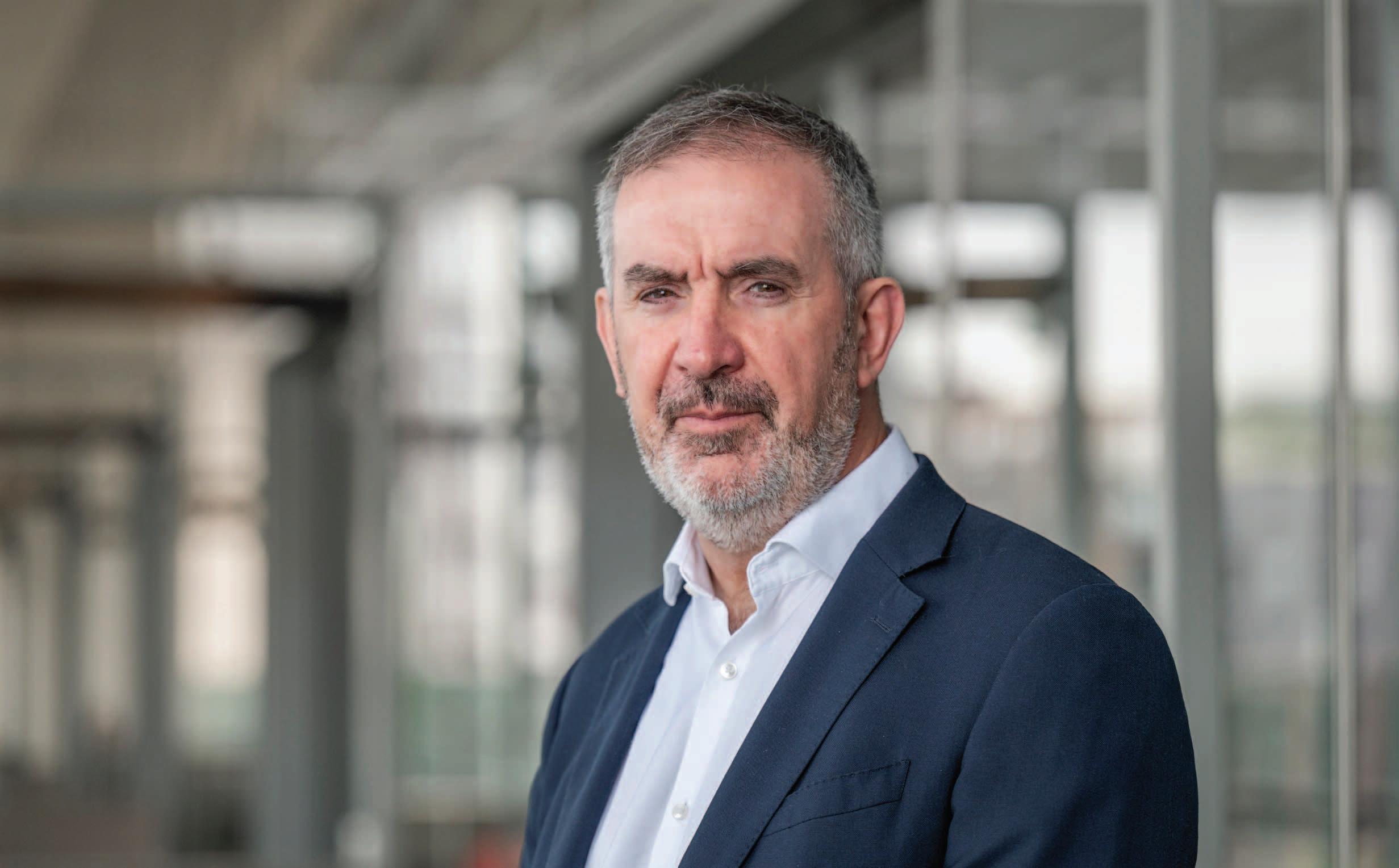
Damien McCallion, formerly Chief Operations Officer of Health Service Executive (HSE), now Chief Technology and Transformation Officer, HSE, says that the future model of healthcare in Ireland cannot be resolved within the health service alone.
Describing evidence-based healthcare policy as a core pillar of public services transformation in the State, McCallion indicates a recognition of the need to base policy on evidence so as to avoid negative impact on people’s lives.
Offering a snapshot of the nation’s health based on the Department of Health’s Health In Ireland Key Trends 2023 report, he says that improvement in life expectancy (now approximately two years above the EU-27 average), of the five-year survival rates from breast, cervical, colorectal and lung cancer, and 10 per cent reduction in all-cause mortality rates in the past decade, are key indicators of the substantial improvement the collective effort of improved public services is having on
the State’s health and wellbeing.
However, indicators also point to the need to prioritise solutions to meet future demand. According to recent CSO estimates, Ireland’s population is projected to grow from 5.2 million to 5.8-6.4 million in the next two decades depending on what migration scenario unfolds. Within that population demographic, the number of 65 to 85 year olds will grow by 66-71 per cent, while the number of over 85s is set to grow by 164-169 per cent. McCallion explains that in 2042, more than one-infive people are expected to be over 65.
As a result, the population increase is expected to drive a 25 per cent increase in emergency department attendance, a 60 per cent increase in
overnight bed stays, and 116 per cent increase in homecare services, for the health service.
Outlining a recognised need to focus resources and investment to meet future demand, while also meeting current pressures, McCallion points to improved cancer survival rates as an exemplar of how a strong policy and strategic framework underpins improved outcomes for patients and service users. Developed in 2017, Ireland’s National Cancer Strategy is being implemented and has delivered an over 10 per cent reduction in mortality from cancer in the last decade and improvements in cancer survival which now match OECD counterparts.

“It is absolutely clear that we cannot resolve the future model for healthcare in this country within the health service alone.”
Damien McCallion, HSE
Turning to the policy being delivered to meet current and future challenges, McCallion describes Sláintecare’s all-of-government design as “very powerful” in its creation of a common direction of travel, while acknowledging that progress requires the retention of buy-in from political stakeholders and the public that they represent.
Sláintecare prioritised two reform programmes. Improving safe, timely access to care, and promoting health and wellbeing is focused on integration, safety, prevention, shift of care to the right, location, productivity, extra capacity and achieving Sláintecare waiting time targets. Within the programme a number of projects are geared towards these areas.
McCallion explains: “A major project is around capacity and that centres on beds and resources, but also on education, workforce planning and lots of other areas. For example, we have a huge challenge in our disability services today where there are some 700 therapist vacancies.
“We have increased the numbers of therapists we educate year on year but that is a four year cycle, and so, we have to look at what we can do in terms of developing new roles such as therapy assistants, or increase international recruitment to bridge those gaps in disability services.
“Interestingly, the big challenge here does not lie with funding or migration. The therapists we are educating are being sought across the health service, as we seek to develop of child and youth mental health services and our older person services. There is a real alignment needed across the health sector in this regard and that work is progressing.”
Other projects identified by McCallion under the umbrella of improving safe, timely access to care, and promoting health and wellbeing include the streamlining of care pathways from prevention to discharge, the development of elective ambulatory care centres in Dublin, Cork, and Galway and surgical hubs in other regions, as well as the implementation of a multi-annual waiting list reduction plan.
The second reform programme, addressing health inequalities, is centred on a move towards universal healthcare and includes programmes such as developing a population health approach for service planning and funding; rolling out the Sláintecare Healthy Communities Programme; and developing regional health areas.
McCallion says: “It is absolutely clear that we cannot resolve the future model for healthcare in this country within the health service alone.”
Turning to how the HSE is delivering on its ambitions. McCallion outlines a constant context, led by the Minister of Health, on whether the organisation can do more or better with the resources they have.
To this end, he says: “Post-pandemic, every healthcare system is facing a challenge where by the effort staff put in and the environment they worked in had a psychological impact, but are being asked to go again as waiting lists and emergency pressures grow. It is a really tough environment and our role is to try and support them through that.
“Some of the initiatives that we are taking forward include efforts to grow our service over six days to drive more out of the system from the resources we have. In addition, we are introducing innovation where possible, such as the integration of new technologies for better outcomes.”
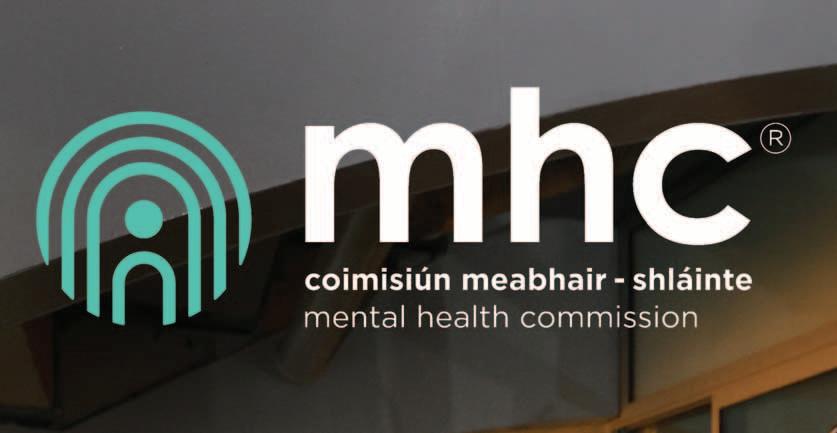




The Mental Health Commission (MHC) is an example of how a public service body can keep its finger on the pulse of society, and adapt delivery of services to enhance an individual’s life experience.
The dominant strategic values driving its work are human rights; dignity and respect; person-centred mental health and decision support services; and driving improvements and access through quality, expertise and accountability.
Irish society is changing rapidly, and the design and delivery of Ireland’s public services must change with it. As a society, we are moving away from large groups of people being cared for or working in the same building – or congregated settings – to both working
and receiving services in our homes and local communities. We are moving away from queuing in government offices – to expecting a swifter digital approach, with 24/7 access to services 365 days a year.
The MHC has strategically aligned with these societal changes. Its current strategic plan, Supporting Change, includes expanding the MHC remit beyond regulating mental health services into providing a broader societal value through the provision of Ireland’s first Decision Support Service. This expansion is based on collaboration with
colleagues in the Department of Children, Equality, Disability, Integration and Youth, and the Department of Health. Core to the expansion is regular and deep consultation with the public, service users, family members and professionals. All of whom express a strong desire for high-quality services which ensures equity of access to person-directed, individualised mental health and decision support services.
The Chief Executive of the Mental Health Commission, John Farrelly, is clear that “the digital revolution” has arrived and he wants the MHC to be ahead of the curve, so that their clients, the professionals they interact with, and the public, receive a modern service.
“We have actively focused our resources on efficient and effective delivery,” he says. “Digital is key to this but it is also a key accelerator for promoting and vindicating the human rights of people who use mental health and decision support services.”
The MHC has a skilled and committed executive body with a highly-motivated and hard-working senior leadership team (SLT) who are determined to keep delivering on the organisation’s strategic objectives. The SLT is complemented by individual members of staff who are directly connected to the strategic and business goals through ongoing performance management and development. “I want our organisation to keep improving to deliver the best service possible to the people we serve. We work hard to create an inclusive


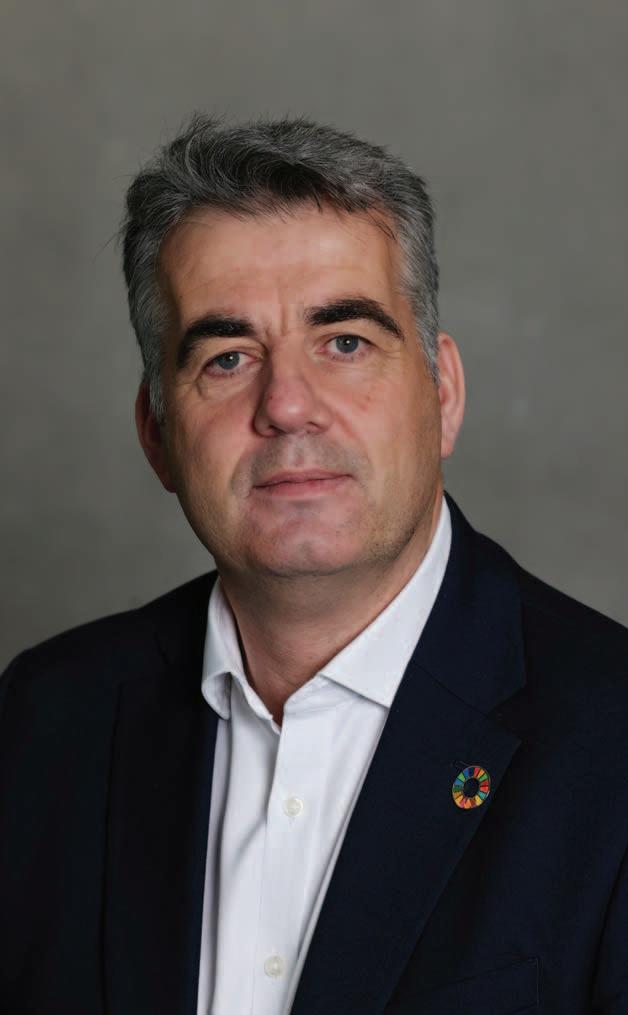
atmosphere, where all members of staff are dedicated to public service values and delivery.”
Chief Operations Officer, Brian Gillespie, leads the corporate team which ensures the MHC is an effective, cohesive, transparently governed and agile organisation. This strong corporate spine provides shared services and a modern ICT infrastructure to support personcentred and digital-first delivery of services. This is with the aim of supporting staff to perform, while reducing red tape and regulatory burden for those that regulates, or for members of the public and professionals who use services. Its digital services were recently recognised by experts from the World Health Organization as an approach that protects and vindicates the rights of people in a real way.
were more than 2,000 decision support arrangements on the searchable register maintained by the DSS. These include the new form of enduring power of attorney (which make up more than 63 per cent of all registered applications), co-decision-making agreements and decision-making representation orders made by the courts and notified to the DSS.
“The DSS is an essential service for all adults,” says Farrelly. That includes those who may have difficulties with decision-making capacity now, potentially including people with an intellectual disability, a mental illness, acquired brain injury, or dementia. But the tools for advance planning- the new enduring power of attorney and advance healthcare directive mean that it also supports all those who wish to ensure that their wishes are understood and respected, should they ever lose capacity in the future. As such it is a service for all."

In April 2023, the MHC launched the Decision Support Service (DSS) for adults who may require help to exercise their right to make decisions – now or in the future. Aine Flynn was appointed by the MHC in 2017 to be Ireland’s first Director of the Decision Support Service. This digital-first service was primarily designed for use with the ordinary person in mind, and the service has already seen 19,000 people from all corners of the country opening an online account since it commenced operations, with almost 9,000 holders of these accounts aged 70 and over.
At the end of November 2024, there
Indeed, apart from the 1,272 EPAs fully registered on the DSS system at the end of November – with almost 1,000 of them registered in the period from July to November – there are thousands more working their way through the submission and registration process, demonstrating an increasing popularity by the public to plan ahead.
Under the Mental Health Act, the MHC has a function “to promote, encourage and foster the establishment and maintenance of high standards and good practices in the delivery of mental health services”. This includes the core objective of driving standards, improving quality, and safeguarding service users by working with all stakeholders.
“We enjoy collaborating and we will continue to work with our colleagues in the Department of Health to support the roll out of Ireland’s mental health strategy, Sharing the Vision, and updating Ireland’s mental health laws.”
With the service user at the centre of his work, the Inspector of Mental Health Services, Jim Lucey delivers programmes of inspections that target risk and promote quality and safety in Ireland’s inpatient mental health units. The publication of both national and individual centre inspection reports ensures a transparency for the public to clearly understand both the strengths
and weaknesses of inpatient mental health services.
Together with his team, the MHC’s Director of Regulation, Gary Kiernan delivers programmes of standards development, registration, monitoring, and enforcement which support providers, while also holding them to account. The MHC also works and collaborates with all of the professionals, service users and providers to create standards that services can implement. Over the last few years, they have developed and implemented a new National Quality Framework for mental health services in Ireland.
The MHC is also custodian of the process for vindicating the rights of patients who are involuntarily detained. This function is led by MHC General Counsel, Orla Keane, who is one of Ireland’s foremost experts in mental health law. Coordinated by a team of highly-skilled professionals, the MHC ensures that any person who is involuntarily detained has the reason for that detention scrutinised by a tribunal that includes consultant psychiatrists, legal practitioners, and lay people. The process also ensure that every person has their own independent legal practitioner who will help vindicate their rights.
“Our work – in collaboration with service providers – shows that there has been a continued upward trend in compliance with approved centre regulations,” said Farrelly. “However, it is also important for a regulator to identify the current challenges that exist within services, such as premises and staffing. We are confident that the proposal for a capital investment programme will ensure that people in Ireland are cared for in modern premises that prioritise the safety of residents.
“Over the next five years – and on behalf of the Irish state – we will continue to operationalise a best-in-class Decision Support Service, and we will work with government, the people using services, and clinicians and providers to strengthen the standards, quality and regulatory infrastructure that protects human rights and further improve mental health service quality in this country.”
T: 01 6362400 W: www.mhcirl.ie

Digital for Care: A Digital Health Framework for Ireland 2024-2030, published in May 2024, identifies electronic health records (EHRs) and integrated care systems as core priorities, while questions about the State’s capacity to deliver such complex systems remain unresolved.
Ireland has faced a historical lag in digital health compared to EU peers, ranking near the bottom of the EU Digital Economy and Society Index (DESI) for health infrastructure in recent years. The framework sets an ambitious vision for transforming healthcare delivery through digital innovation. While its goals of improved patient care, workforce enablement, and data-driven services are laudable, achieving these aspirations will require overcoming systemic challenges that have historically hampered progress in the State’s health sector.
While the Government’s target of providing every citizen with access to a digital health record by 2030 aligns with EU targets under the European Health
Data Space (EHDS), progress to date has been limited. The HSE’s rollout of EHRs has seen delays and cost overruns. Although St James’s Hospital has provided a notable exception, replicating such success nationally will require addressing systemic challenges, including fragmented IT systems, underinvestment in infrastructure, and insufficient digital literacy among both staff and patients.
Martin Curley, former Chief Information Officer of the HSE, noted in 2022 that Ireland has “the opportunity to leapfrog legacy systems seen elsewhere in Europe”, but that this “requires bold decision-making, substantial investment, and a national digital-first mindset”.
A digitally enabled workforce is cited as “critical” for the success of the Digital for Care framework. The document envisions a healthcare environment where professionals are empowered with interoperable systems, secure digital identities, and real-time access to patient information. While this represents progress, current realities suggest the road ahead is steep.
The Irish Medical Organisation (IMO) has consistently cited resource strain on healthcare workers. In 2023, Ireland had fewer than 3.3 doctors per 1,000 people, below the EU average of four. Therefore, the introduction of new digital tools
could exacerbate, rather than alleviate, the workload unless properly integrated and supported by robust training.
The Government’s focus on digital literacy will be welcomed by decision-makers, however, as the European Court of Auditors warned in 2022, poorly executed digitalisation risks alienating frontline workers, particularly in systems where legacy processes still dominate.
Therefore, the framework stipulates that the Government must engage directly with frontline workers to co-design systems that complement existing workflows and simplify administrative burdens, rather than creating additional complexity.
The framework commits to leverage data for policy and service optimisation. The emphasis on dashboards, predictive analytics, and real-time monitoring has the potential to revolutionise health service delivery.
However, the State has historically struggled with data governance. A lack of centralised data standards and oversight has led to inconsistent reporting and limited utility of collected data. According to the Health Information and Quality Authority (HIQA), only 42 per cent of Ireland’s health datasets are interoperable across systems. Without clear national standards and stronger legislative backing, such as the long-delayed Health Information Bill, data-driven ambitions may fall short.
To build confidence in this area, the framework states that government should prioritise:
• accelerating the adoption of international interoperability standards like FHIR (Fast Healthcare Interoperability Resources) and SNOMED Clinical Terms;
• publishing regular, independent audits of health data systems to ensure compliance and transparency; and
• proactively communicating with the public about how their data will be used, addressing privacy concerns head-on.
Digital health transformation risks widening existing inequities if vulnerable populations – particularly older adults and rural communities – are not adequately supported. According to Eurostat, over 23 per cent of Irish adults lack basic digital skills, with rural areas disproportionately affected.
The framework acknowledges these risks, committing to preserving non-digital service access while fostering digital literacy programs. Yet there is limited detail on how these programmes will be resourced or delivered at scale.
Therefore, the framework asserts that digital literacy efforts must be accompanied by investment in physical infrastructure, as rural broadband access remains inconsistent, undermining the potential of telehealth and remote monitoring solutions in such areas.
The framework emphasises the need for robust governance to oversee digital health projects, yet Ireland’s track record in this area remains mixed. High-profile failures, such as the 2021 cyberattack on the HSE, highlighted vulnerabilities in governance and cybersecurity readiness.
Furthermore, while the establishment of regional health areas (RHAs) is a step forward for localised accountability, their integration with national systems remains under-defined. Niamh Brennan, a governance scholar, has warned that “fragmented oversight structures risk creating silos rather than the integrated care the government envisions.”
To mitigate these risks, the framework states that government must ensure:
• clear lines of accountability between RHAs and national bodies like HIQA;
• a centralised project management office for national digital health initiatives, equipped with technical and clinical expertise; and
• dedicated funding streams that are insulated from political cycles.
While Ireland has a long way to go to achieve digital health maturity, the Digital for Care framework represents an opportunity to fundamentally transform Irish healthcare, but its success hinges on sustained political will, careful planning, and transparent execution.

The catering department at St John’s Hospital is setting a new standard in healthcare catering through innovative initiatives focused on wellbeing and cultural inclusivity.
Recently awarded the Irish Heart Foundation’s Happy Hearts Gold Award, the department is recognised for its dedication to promoting heart health across meal offerings, ensuring that nutrition remains a core pillar of wellness for both patients and staff.
The Happy Hearts at Work Programme, an initiative by the Irish Heart Foundation, encourages workplaces across Ireland to support their employees’ cardiovascular health by offering nutritious, heart-friendly meals. This prestigious award highlights the department’s commitment to integrating cardiac health principles into each meal, providing nutritionally balanced options that align with the highest standards of care.
Emer Martin, CEO, says: “This accolade recognises the hospital’s outstanding efforts in promoting heart-healthy eating options for staff in the hospital’s restaurant, showcasing a commitment to improving the overall health and wellbeing of its workforce.”
Allen Moore, Head of Catering Services and a recent Trinity College graduate in healthcare innovation, expressed his pride in the team’s achievement:
“Ensuring that our staff have access to healthy, balanced meals is not only a part of our responsibility but also a vital aspect of fostering a productive and health-conscious work environment. We have taken significant steps to ensure that the meals provided in the staff restaurant meet the highest standards of heart-healthy eating. This includes offering lower-fat options, reducing salt and sugar, increasing the availability of fresh fruits and vegetables, and incorporating whole grains into the daily menu.”
In addition to this health-focused achievement, the team at St John’s is devoted to fostering an inclusive work environment that celebrates the diverse backgrounds of its staff.
In September, the department organised an Onam celebration to honour the significant contributions of South Indian nursing staff who play a vital role in the hospital community. Onam, a major festival from Kerala, India, symbolises unity and abundance, themes embraced by involving nursing staff in the preparation and presentation of a traditional Onam Sadya feast.
This initiative not only celebrated the hospital’s south Indian colleagues but also enriched the cultural fabric of the institution, promoting cross-cultural understanding among staff. More recently, Multicultural Day was celebrated, culminating in an international presentation of culinary delights from a diverse representation of our staff.
The catering department members are champions of innovation, health, and inclusivity, reflective of St John’s own mission statement and values. Their leadership unites staff through food, creating a health-focused and culturally inclusive environment within the hospital.
St John’s remains committed to building on these achievements, continuing to develop initiatives that reflect the health and diverse spirit of its hospital community. “Our staff are the face of St John’s, living out our vision and mission statement in their interactions with patients, families, and colleagues. I am constantly impressed by the resilience, resolve, compassion, and strength shown by our staff towards their patients and work each day,” says Emer Martin.
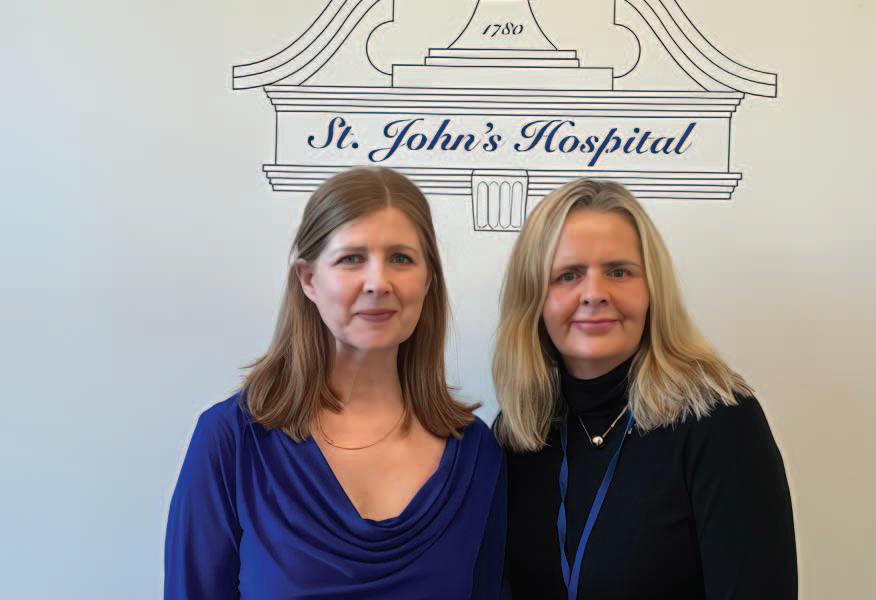
Leonard O’Sullivan, Director RIU, School of Design, Health Research Unit, University of Limerick, talks about the Rapid Innovation Unit (RIU), an immersive design-based healthcare innovation collaboration between St John’s Hospital Limerick and the University of Limerick.
The collaboration involves a targeted programme of clinical immersion with direct staff engagement to identify, validate, and create innovations to improve patient care and service delivery.
An inherent outcome of this collaboration at a hospital level is increased creative thinking regarding identifying improvement opportunities, and then also in implementing solutions. The application of design and innovation methods through a collaboration approach with staff enables new approaches to address needs from specific patient through to system level innovations and changes.
In one example, the RIU worked with the team in the Clinical Recovery and Support Unit (CRSU) at St John’s to deliver a solution for a patient with advanced rheumatoid arthritis who spent a month in intensive care following emergency bowel surgery.
The patient, a 68-year-old woman, had difficulty gripping utensils to feed herself due to hand arthritis. Both regular cutlery and special arthritic cutlery were unsuitable for her. After meeting with the patient and the clinical team, the RIU team designed and made bespoke holders to adapt cutlery to fit her hands and the limit grip she had (right). Three versions were created to suit a knife, fork, and spoon.
The design enabled the patient to feed herself independently. In another example staff reported that a manual way of noting patients’ locations in units of the hospital using a white board was inefficient. The RIU team and staff designed a live electronic patient tracker board which detailed the unit of care in the hospital in which the patients currently were. The IT staff of the hospital then implemented the solution. This system has now been expanded to several units of the
hospital wherein it has significantly increased patient flow and efficiency.
A key feature of the RIU collaboration in the hospital is the composition of multidisciplinary innovation teams comprising both clinical experts and design innovators. St John’s Hospital seconded Siobhan Meany, Clinical Nurse Manager Perioperative Care, to the RIU as clinical Innovation Lead where she worked alongside designers. In her role Meany leads the clinical innovation strategy by way of a programme of engagement with clinical groups. In this role, Meany has led local innovation initiatives through to implemented solutions which have subsequently been shared with clinical colleagues on the national stage. One such initiative was the design and implementation of a novel constant pressure saline irrigation solution for laparoscopic surgery which was awarded the Spark Ignite award by the HSE in 2023. Since then, Meaney was awarded HSE Spark Clinical Fellow. The collaboration between the RIU and St John’s Hospital demonstrates the high impact of multi-disciplinary innovation teams in healthcare systems.

St John’s Hospital
St John’s Square, Limerick, V94H272 T: (061) 462 222 W: www.stjohnshospital.ie

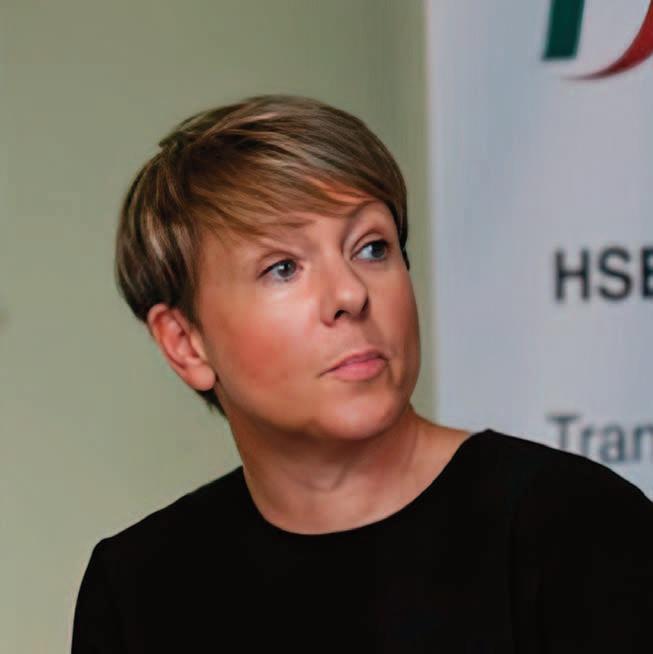
Following the publication of an All-Ireland Digital Capability Framework for Health and Social Care, eolas Magazine sits down with key stakeholders involved in creating and delivering the broader framework across the HSE.
Initially adapted for nursing and midwifery in Ireland – north and south –the All-Ireland Digital Capability Framework for Health and Social Care has its roots in the delivery of Australia’s National Nursing and Midwifery Digital Health Capability Framework, led by the Australian Digital Health Agency and developed by the Australasian Institute of Digital Health.
The evolution of the framework stems from work undertaken by Loretto Grogan, the HSE’s National Chief Nursing and Midwifery Information Officer, to carry out a scoping review of successfully implemented international competency and capability frameworks, initially aimed at improving workforce capabilities for the HSE’s nursing and midwifery workforce.
Collaboration with the Australian Institute of Digital Health, which shared its framework and learning from its own journey, culminated in the creation of
an all-island competency framework for nursing and midwifery. This was followed by the completion of an allisland consultation and subsequent approval. In turn, a similar consultation was held by the National Health and Social Care Professions Office, aimed at the general health and care workforce.
Implementing improved digital capability goes beyond the deployment of new technologies or devices. The evolution of technology in health and care also requires a workforce which recognises and understands the significance of socio-technical dimensions in digital health implementation.
Grogan, the HSE’s National Chief Nursing and Midwifery Information Officer, believes that Digital for Care: A Digital Health Framework for Ireland for 2024 to 2030, and the HSE’s corresponding Digital Health Strategic
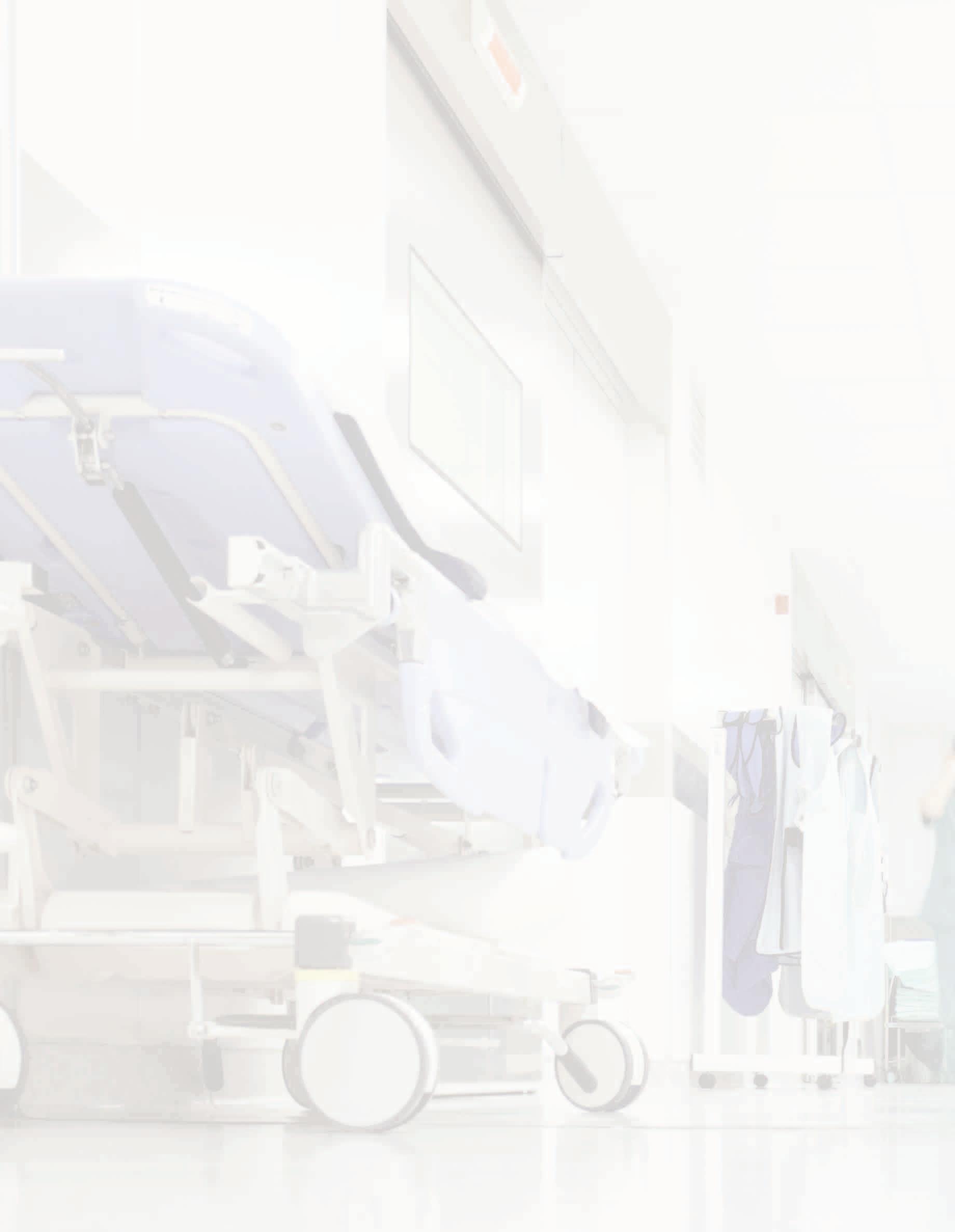
Implementation Roadmap has the potential to be “the biggest and most effective driver of change and improvement for better patient outcomes across the health system in Ireland”. The all-Ireland framework, she explains, is a key enabler of this ambition.
“It is about having a coherent suite of digital health solutions underpinning and supporting our overall vision for integrated, patient-centred care, population health planning and more effective and safe delivery of health services. Patients and health professionals will have ready access to the right information about the right patient in the right place at the right time which will enable better decisions to be made,” she explains.
The framework comprises five domains, which sit within the context of health and care professional roles, workplace settings, and the professional standards

that apply to practice. These domains are:
1. digital professionalism;
2. leadership and advocacy;
3. data and information quality;
4. information enabled care; and 5. technology.
The framework recognises the unique digital health capabilities of health and care staff across all disciplines, while also acknowledging evolving expectations around digital health, much of which were catalysed by the Covid-19 pandemic.
Niall Halliday, the HSE’s National Chief HSCP Information Officer explains: “The Framework is intended to empower individuals, their teams, and organisations. What is relevant to one individual in a particular setting may not be relevant to another. Health and care staff may be at a learning or ‘formative level’ in some domains while ‘proficient’ – in other words, leading or championing – in others.
“At one end of the spectrum, there is a level below ‘formative’ for colleagues who need foundational training and literacy in digital health. At the other end – there will be a need for specific high-level consideration around leadership for staff with specific needs beyond ‘proficient’ in some domains.”
Halliday says that the development of a governance structure to effectively manage the broad and ranging piece of work, is underway, with priority currently being given to the foundational elements of digital education.
“One of the initiatives being undertaken in partnership with the HSE’s digital team is the development of a learning passport, which will be carried through individual’s digital capability journey,” he details.
This initiative comprises three foundational modules:
1. digital clinical safety;
2. data literacy; and
3. digital health literacy.
“They have been developed in partnership with our colleagues across the HSE, who have been brought
“One of the initiatives being undertaken... is the development of a learning passport, which will be carried through individual’s digital capability journey.”
Niall Halliday
together in the form of expert review groups for the content and development.
“The design and development of the digital products, and the modules has been finalised within the HSE, utilising the expertise that we have within the technology and transformation office. Overall, it has been a tremendous collective effort.”
Halliday says that with the clinical safety module nearing completion, all three foundational modules are expected to go live in Q1 2025.
Expanding on this, Grogan explains that progress will be underpinned by the experience garnered through the delivery of the nursing and midwifery framework. “Alongside the framework, we developed digital health competency standards which pervaded all of the education settings. What it has meant is that all our undergraduate nurses, and midwives, will have digital health built into their undergraduate programmes, and that competency framework is built directly in partnership, and directly from the framework with our regulatory body.”
Elaine McLoone, the HSE’s Communications Lead for Digital Care described the implementation of the framework suggests that HSE staff will take comfort from their centricity to the framework.
“The framework builds on our approach of breaking down the digital divide for our health and care workforce, identifying gaps, and deploying learning
and training solutions to bridge these. This aligns with work already being undertaken across the HSE.”
Halliday stresses that the framework is geared towards enabling the digital capabilities of the whole workforce, not simply clinicians.
“The foundational modules have been developed with the intention of bringing everyone along at the same pace and ensuring that everyone has that foundation ahead of the increased deployment of digital solutions within the HSE.
“Further development will emerge via the development of new pathways, tailored for relevant professions. The idea of creating stepping stones, of building people’s competencies and capabilities, so that they are accessible to them at a time and a place when they need it, is where we want to get to.”
Outlining her vision for implementation in 2025, Grogan acknowledges that: “Healthcare professionals work in an increasingly digital environment, with the associated benefits becoming central to the delivery of patient-centred care. Improving overall digital capability, therefore, is a key enabler of leveraging digital health technologies effectively and safely.
“Our priority is to have a significant proportion of the workforce engaged in the learning passport initiative in the year ahead, with an ambition to have most, if not all, of the workforce at a foundational level by the end of 2025.”
People centric solutions for better healthcare
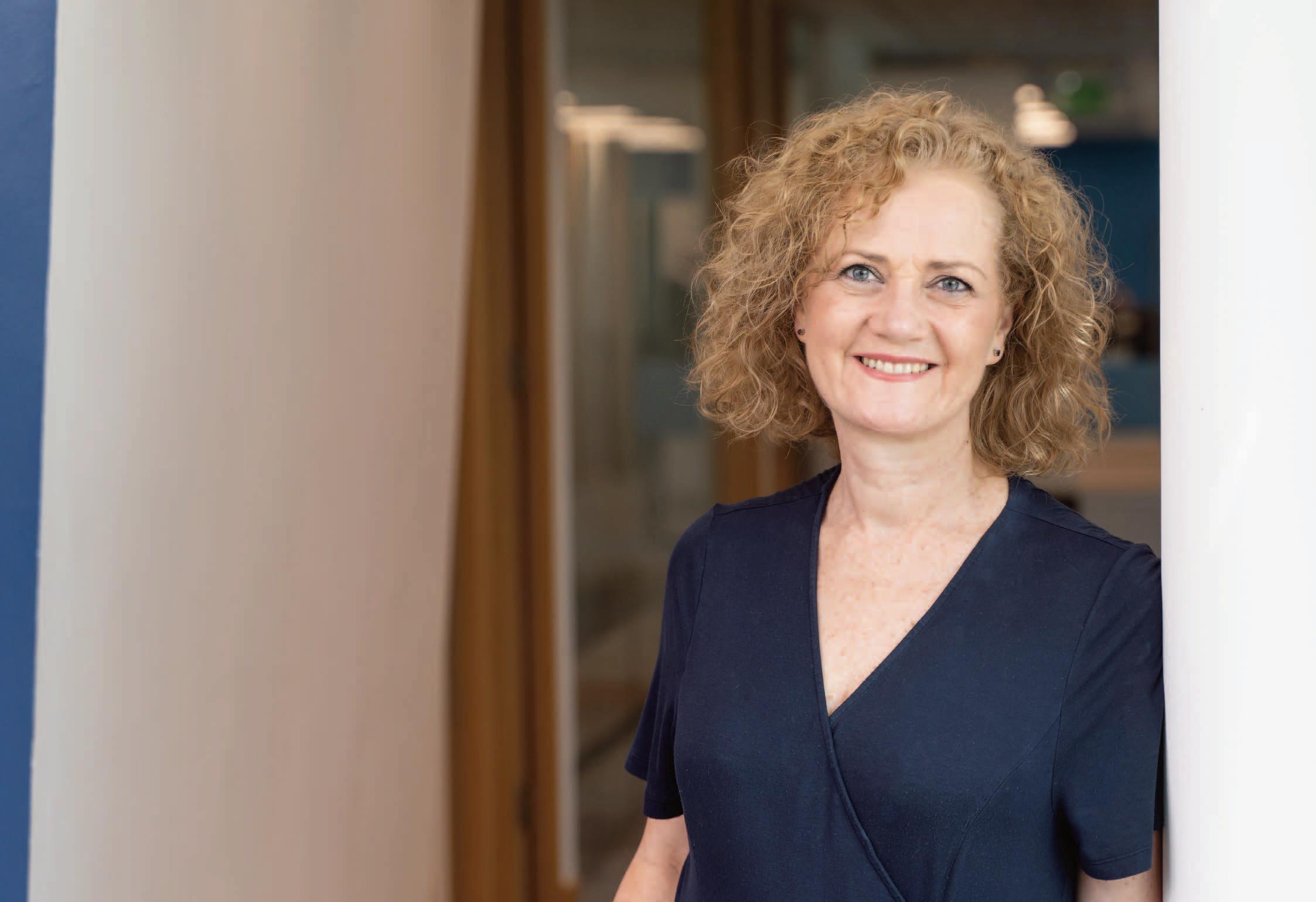
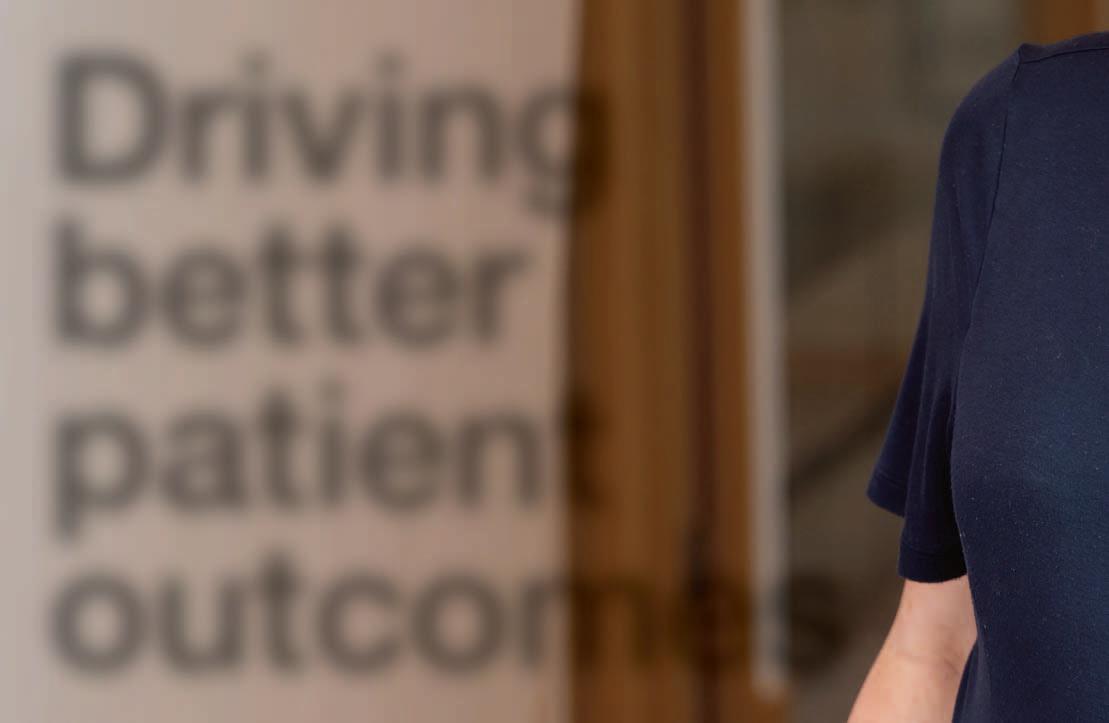

The national service plan for health is focused on the delivery of the right care, at the right time, and closer to home. This can be achieved through reimagining care pathways, understanding needs, and leveraging data and technology to improve patient and clinician experience, writes Claudia Carr, Partner, BearingPoint Ireland.
The introduction of healthcare regions by the HSE, was driven by the benefits to be achieved through the decentralisation of decision making to allow for a more localised management of healthcare services, and reflect the different needs of local populations. There is international evidence to support that this approach leads to better patient outcomes, wellbeing and overall improved efficiencies of the delivery model.
Transitioning to a delivery model that supports this goal requires close
collaboration and coordination between all parts of our health system. This goes beyond primary and secondary healthcare providers and includes roles that are played by other healthcare professionals, pharmacies and community support services.
In a fragmented system with several stakeholders and record management systems, the challenge becomes identifying what is the right care, where is the right place and when is the right time.
Improving patient experience and outcomes requires a holistic approach to patient care. Both patients and healthcare providers must be involved in the design of care pathways.
In many cases the cost of early intervention, and preventative measures, reduces the risk of complications at later stages in the patient journey, many of which can result in a significantly increased cost of care and poorer
patient experience. For the most part patients themselves can be empowered to manage and understand their own needs and when intervention is required. Responding to those needs rapidly, is key.
Challenges in accessing GP services can lead to an increase in presentations for unscheduled care in acute hospital settings including already crowded emergency rooms. However, the ease of access to digital systems, and advancements in AI technologies, can alleviate some of these pressures and reduce the risks of delays in accessing support services for day-to-day healthcare, in addition to mental health support services and management of chronic disease.
Irish private healthcare insurance providers now report that between 20 per cent and 30 per cent of GP consultations are now managed through digital channels. For the most part, these appointments are scheduled at a more convenient time for the patient, have a shorter wait time and can be completed in the comfort of their own home, reducing the need or cost of travel. They are also working directly with pharmacies to administer vaccinations. Such measures are generally more convenient for patients, but also release capacity and wait times for communitybased GPs for in-person consultation with patients.
With 46 per cent of Europeans experiencing mental health challenges, demand for services is increasing, and accessing treatment can be challenging. Generative AI is being used by clinicians to quickly diagnose, assess patient needs, and prioritise appointments.
TalkToAlba is a Generative AI tool for clinical psychology which supports recruitment, initial interview, assessment and treatment of patients reporting mental health issues including transcribing and assessing clinicians’ meetings with patients. Patients appreciate the convenience of engaging at a suitable time, and clinicians report time savings and improvements in the quality of information available to inform diagnosis and treatment plans.
There are a number of factors that need to be addressed to support the implementation of technology augmented treatment pathways. This includes both electronic patient records, and wider acceptance and adoption by both healthcare professionals and patients.
An electronic patient record accessible by healthcare professionals can support an individual. Despite data privacy and security concerns, many people prefer to share relevant medical records with their treatment providers. This includes medical history, medications, adverse reactions, and allergies. Solutions now exist for patients to manage and store their own records, but accessing those maintained by healthcare providers remains challenging.
Lack of digital literacy is often a barrier to patients adopting technology solutions. However, organisations that engage with clinicians and patients on digitalisation have seen positive results. Community healthcare teams and peer support networks play a crucial role in supporting adoption.
From a healthcare providers perspective, the introduction of additional technology can be seen as an additional burden. Investment in the appropriate resources to support adoption and patient pathways at a community level, including hospital at home services, has been proven to reduce the overall cost of care per patient.
When establishing the Decision Support Service (DSS), the Mental Health Commission engaged potential future users as experts by experience during service design. This included obtaining their feedback through facilitated workshops on the design of the digital platform, and associated training and communications materials. They continue to provide input on the continuous development of the service.
An integrated community care model which includes home care, GP and hospital at home services, can result in a lower cost of care and better patient outcomes. Resulting benefits support
Increasingly NHS Trusts analyse data and outcomes to inform decision making on community based patient supports, including hospital at home, based on need. This has led to significant reductions in hospital admissions and an overall reduction in cost of care for
patients with long term
many of the goals of the regional healthcare system model including the more efficient use of resources, and flexibility to meet the changing needs of communities. This includes building funding models that focus on patient outcomes rather than the location where care is provided.
Technology can enhance patient and clinician experiences, but it must be integrated thoughtfully. Redesigning the entire patient journey with service designers, patients, and healthcare providers is crucial. Adoption depends on meeting stakeholder needs through structured change management, communication, outcome measurement, and continuous improvement.



Francesca Racioppi, head of office at World Health Organization (WHO) European Centre for Environment and Health talks about the interconnectedness of environmental challenges and public health crises across the European continent.
Despite being the continent with many countries being among those with the highest wealth per capita and highest living standards, Europe faces alarming health risks tied to environmental factors. Annually, at least 1.4 million deaths in the 53 countries that make up the WHO European region are attributable to environmental and health risks.
In this context, Racioppi asserts that air pollution stands out as the “leading culprit”, claiming over 500,000 lives each year and contributing to noncommunicable diseases such as cardiovascular illnesses, dementia, and adverse pregnancy outcomes.
Racioppi outlines how intertwined environmental challenges exacerbate health risks.
On climate change, she outlines that Europe is warming at twice the global average, leading to more frequent, more
severe and longer lasting heatwaves, floods, and extreme weather events, with heat claiming more than 175,000 lives annually. “These impacts disproportionately affect vulnerable populations, further widening health inequalities,” she states.
On water quality, Racioppi warns that rural populations in eastern Europe still lack access to clean water. With the deadline of the 2030 Sustainable Development Goals approaching, neglect in this area is a “glaring gap that demands immediate redress”.
She also states that the transition to a circular economy “hinges on addressing hazardous chemical exposures” as “without taking into account and controlling for the possible risks of practices such as water reuse for agriculture, there is a possibility of unintended negative health effects that can undermine sustainability goals”.
During the prolonged heat wave in summer 2023, for the first time the WHO European Region has declared climate change and extreme weather events as a public health emergency – on a par with pandemics. However, only a handful of European health ministries have already integrated climate considerations into their formal policies.
Racioppi praises Ireland’s leadership in this space, asserting that the Department of Health has not only prioritised climate and health, but has also spearheaded a new WHO partnership for member states to exchange knowledge and build capacity. This commitment, she states, “reflects a recognition that climate resilience and adaptation are essential to sustainable healthcare systems”.

On the relationship between climate change and health, Racioppi states that the European health sector contributes approximately 5 per cent of global greenhouse gas emissions, and urges health leaders to reduce this footprint, adding that it is “not only a moral imperative but also economically beneficial”.
Describing the Covid-19 pandemic as a “harsh teacher” which “exposed vulnerabilities in public health systems and highlights the consequences of ecological disruption”, Racioppi warns that future pandemics are likely to stem from the emergence of new diseases driven by biodiversity loss and ecosystem encroachment.
In response, the WHO has placed nature preservation at the forefront of its health agenda. Government health departments, however, face “capacity gaps in embedding ecologists and environmental expertise into their operations”.
“This is a governance challenge,” she states, calling for stronger collaboration between health and environment ministries.
Referring to progress being made at an EU level, including the adoption of new European air quality targets after years of negotiation, Racioppi underscores the need for further collective action by member states at an EU level.
While she acknowledges that some member states have expressed reservations on adopting new, more stringent standards, Racioppi emphasises the need for collective action in order to ensure “tangible benefits for millions of Europeans”.
Ireland’s proactive role in aligning health and environmental strategies positions it as a “model for other countries”, Racioppi states, adding that policymakers in Ireland have “an opportunity to lead by example” by demonstrating how integrated policies can “improve health outcomes while addressing climate and environmental risks”.
“Ministries of health must prioritise environmental health, appointing dedicated experts and fostering intersectoral partnerships.”
By building on initiatives like the WHO partnership and leveraging lessons from Covid-19, Racioppi says that Ireland can continue to shape a healthier, more sustainable future which can be of benefit for the State and for its fellow EU member states.
Racioppi states that joined-up thinking between health and environmental sectors requires three strands. The first of which is integrated action, of which she states: “Ministries of health must prioritise environmental health, appointing dedicated experts and fostering intersectoral partnerships.”
The second strand is youth engagement. “Young people’s climate anxiety is a reflection of the challenges ahead, but it also underscores the importance of securing their future through decisive action and empowerment of youth in decision-making related to environment and health,” she says.
The third and final strand is “building forward better”. “Post-pandemic recovery must embrace sustainability and equity, ensuring that health systems are resilient to environmental shocks.”
In a message to environmental activists and professionals, she concludes: “At some point, you chose to work in this field because you wanted to make a difference. Let us ensure that difference is realised, for our health, and for our survival.”

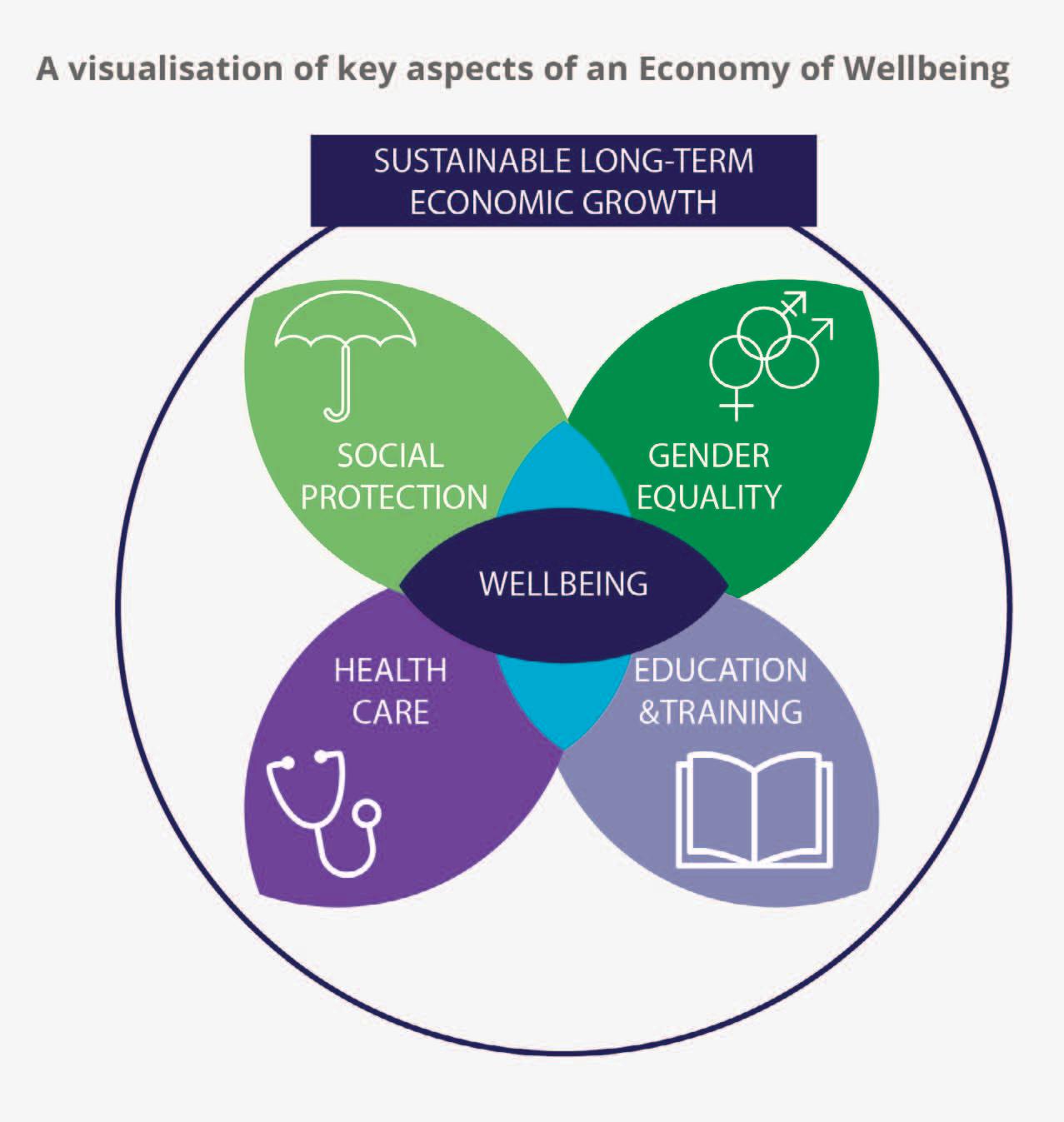
Putting health and wellbeing at the heart of policy could help to secure a healthier, more sustainable, and more equitable future in Ireland and Northern Ireland, according to a recently published report and policy brief by the Institute of Public Health (IPH) and EuroHealthNet.
The report, Creating an impactful and sustainable Wellbeing Economy for better public health, and policy brief, Wellbeing Economy: An economy that works for people and planet, explore the potential benefits of adopting a wellbeing economy to reframe how societies define and measure progress.
The report and brief consider how a wellbeing economy could put planetary and human health at the core of all policy and legislation, for all members of society, both now and in the future.
A wellbeing economy moves beyond traditional economic indicators, such as gross domestic product (GDP), to
include a range of new indicators that capture and track wellbeing, happiness, social cohesion and other aspects of health.
By putting health and wellbeing at the heart of all policy, a wellbeing economy places greater emphasis on disease prevention, health promotion, and tackling factors that influence and shape our health, such as, clean air, housing, food, and systemic inequality.
The report considers how wellbeing economy concepts are being progressed and applied globally. It details, for example, how the Welsh Government has introduced a Future Generations Act, which legally mandates the consideration of longterm wellbeing in policymaking and public services.
It highlights the adoption of a wellbeing budget by the New Zealand Government, which puts wellbeing and the environment at the core of national policy, using social, environmental, and fiscal indicators to guide funding.
The joint report also considers how Ireland and Northern Ireland could capitalise on the wellbeing economy concept.
Ireland has been developing a Wellbeing Framework since 2021 and could benefit from continued investment, a greater focus on health as an asset, as well as greater alignment between the framework being developed and current health policies, such as Healthy Ireland and Sláintecare. Ireland’s Wellbeing Framework, which includes 35 indicators across 11 dimensions that encompass quality of life, equality, and sustainability, is due for review by 2026.
In Northern Ireland, the report highlights an opportunity to build on previous work collating data from wellbeing indicators for the UK Office for National Statistics (ONS).
IPH informs public policy to improve population health on the island of Ireland. We do this by undertaking research and analysis and developing policy briefs and submissions for government departments and parliamentary committees on a range of public health issues. 2024 saw significant commitments and developments to reduce harms from tobacco and nicotine, alcohol, and gambling products in Ireland and Northern Ireland.
Northern Ireland: Proposals to introduce Minimum Unit Pricing (MUP) for alcohol in Northern Ireland moved a step closer in 2024, following a commitment by Health Minister, Mike Nesbitt MLA, to the Northern Ireland Assembly Committee for Health. This followed an event hosted by IPH at Stormont on the potential of MUP to reduce levels of alcohol harm in Northern Ireland. MUP for alcohol is in place in Scotland, Wales, and Ireland.
Northern Ireland: The UK Parliament Tobacco and Vapes Bill was introduced in 2024 to phase out the sale of tobacco and tackle vaping across the UK. A ban on the sale of single use vapes is expected to be introduced in Northern Ireland by April 2025.
IPH provided evidence on the Tobacco and Vapes Bill to the Northern Ireland Assembly. IPH also undertook a review of the health effects of vaping in children and adolescents to inform policy development in Northern Ireland, as recently published in The Lancet
Ireland: In 2024, Ireland approved legislation to raise the minimum age of sale of tobacco products to 21 years, putting it on course to be the first country in the European Union to do so.
Ireland: The Gambling Regulatory Authority of Ireland (GRAI) was established under the Gambling Regulation Act 2024 to license and regulate gambling services in Ireland. IPH is a member of GRAI Research Steering Group. As part of the pre-
Established as a north/south agency in 1998, the Institute of Public Health (IPH) has been shaping public health policy across the island of Ireland for over 25 years. Our work focuses on promoting health and wellbeing, improving health equity, and reducing health inequalities throughout the life course. IPH is jointly funded by the Departments of Health in Ireland and Northern Ireland and works with a variety of stakeholders across the island, the UK and Europe.
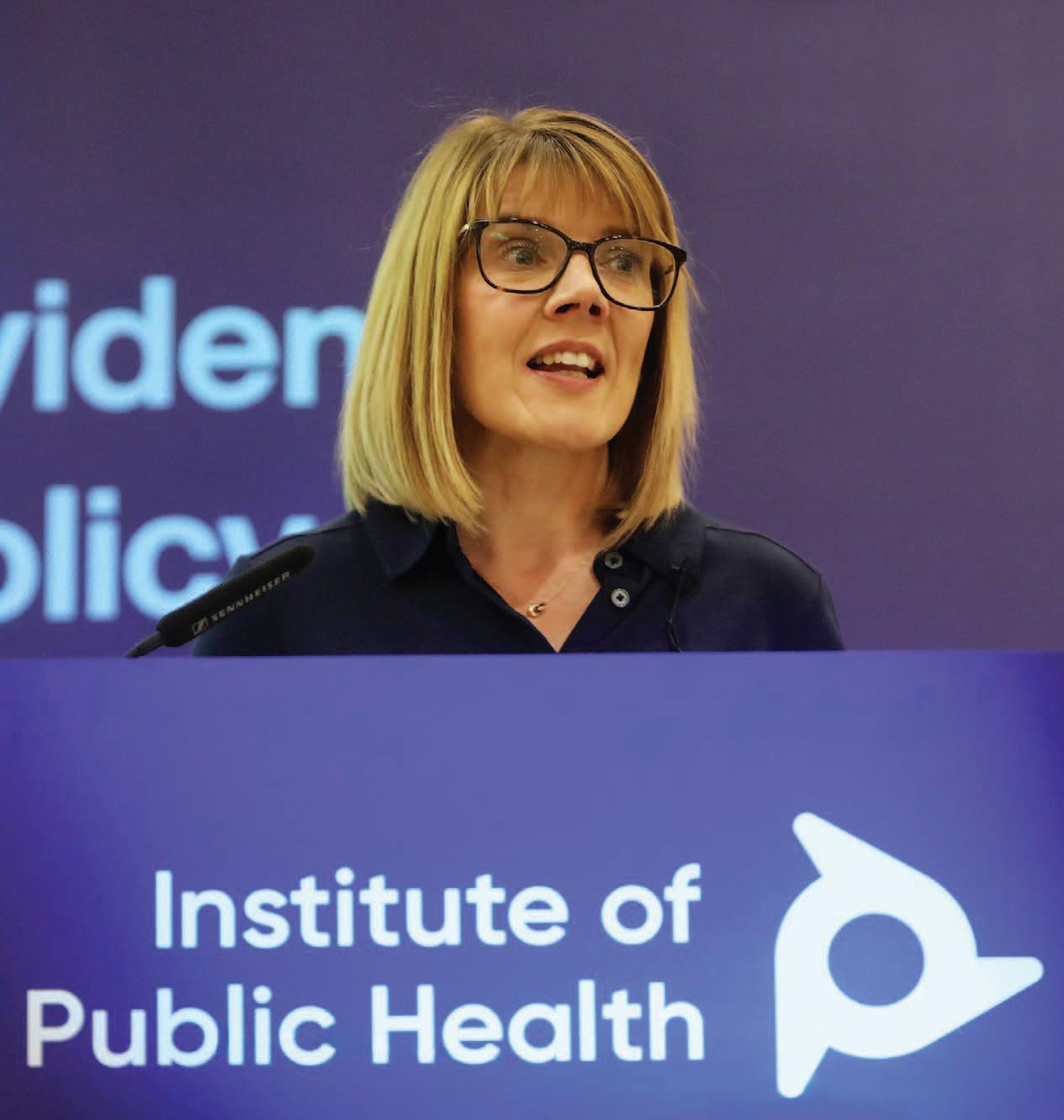
legislative scrutiny process, IPH gave evidence to the Joint Oireachtas Committee on Justice on the Gambling Regulation Bill. A 2023 report, published by IPH, found that almost a quarter of 16-year-olds in Ireland gambled for money in the previous year.
Northern Ireland: In 2024, the Northern Ireland Assembly All-Party Group on Reducing Harm Related to Gambling identified gambling as a significant public health challenge. IPH gave evidence to the APG as part of its 14-
month inquiry, which recommended a public health approach to address gambling-related harms. The Department for Communities is currently consulting on The Betting, Gaming, Lotteries and Amusements (Northern Ireland) Order 1985 Gambling Code of Practice. IPH is developing a response to this consultation.
Further information on tobacco, alcohol, gambling and other public health topics can be found at W: www.publichealth.ie


A device which can recognise 75 different abnormalities on chest x-rays, and the ability to detect Parkinson’s disease from a picture of the back of the eye, are just two examples of benefits which artificial intelligence (AI) could unlock for Ireland’s healthcare system to enhance patient care, says HSE consultant nephrologist and senior lecturer at University of Galway, Conor Judge.
Spending roughly half his time working in the HSE and the other half as a senior lecturer in applied clinical data analytics at the University of Galway, Judge’s primary focus is applying AI solutions to enhance patient care, particularly in the realm of chronic conditions like hypertension.
“We have huge unmet clinical research need whereby the number of AI publications emerging in healthcare, are not matching the number of AI or machine learning enabled medical devices approved by the FDA,” Judge states.
“There are really interesting research examples of AI in healthcare, some of which are being used in Ireland, but most are not in any of our hospitals. The experience of AI devices being used in other countries are very telling and indicate that they can deliver better patient care.”
He points to a medical device called ChestLink, which was developed by Oxipit and was the first AI device that got the CE mark for fully autonomous reporting.
“Oxipit developed this computer vision and model that was able to recognise 75 different abnormalities on chest x-rays,” Judge explains.
“If it did detect one of those 75 abnormalities, then the image was sent back to the consultant radiologist who would then report on the chest xray.”
Judge states that this an example of “task sharing between AI and the physician”, and emphasises that this is something that we will “see more and more of in the next few years”.
The University of Galway lecturer also notes another example of AI technology being used to
determine the early changes of Parkinson’s disease. A team of researchers in Moorfields Eye Hospital in London, led by Irish ophthalmologist Pearse Kane, developed a computer vision model, training it to consider 1.6 million pictures of the retina.
“The computer vision model is able to detect early changes of multiple eye conditions, such as age related macular degeneration… which is very impressive as it is able to do a task that non-specialists physicians find hard,” Judge states.
“What is more amazing is that this model was also trained to be able to recognise conditions that are not actually associated or previously taught as associated with the eye,” he says, adding: “There was a lot of press coverage about this AI technology being able to detect the early changes of Parkinson’s disease, a disease that we did not think had any relation to the eye.”
Judge also hails an AI technology called Deep Resolve, which is used in several MRI scanners throughout Irish hospitals. Developed by Siemens, it has created a computer vision model that takes the raw information from the MRI scan and it recreates the final image that the consultant radiologist is able to see.
“Deep Resolve allows consultants to take a quicker scan with a lower quality of raw data and produce the same image,” Judge states. “Currently, this is in use in many hospitals in Ireland and consensus amongst consultants and academics indicates that the AI technology makes the MRI scanning process 73 per cent faster.”
Judge points to another AI technology used in treating Irish patients who have suffered from strokes or suspected strokes, which was developed by a company called Brainomix. The technology uses computer vision AI algorithms to support doctors by providing real-time interpretation of brain scans to help guide treatment and transfer decisions for stroke patients, allowing more patients to get the right treatment in a timely manner.
Judge says that the technology is “exceptional”, in calculating the ASPECTS score (which is a 10-point quantitative topographic CT scan score used in patients
with middle cerebral artery stroke), and that the company have “automated this whole process using a computer vision model that is in use in many hospitals in Ireland”.
As the senior lecturer in the University of Galway master’s programme for applied clinical data analytics, Judge speaks extensively about the future potential for multimodal AI, a new paradigm in which various data types are combined with multiple intelligence processing algorithms to achieve higher performances, in medicine.
He illustrates a clinical scenario in which a patient is admitted to hospital and there are multiple points of data collected about the patient.
“Patients come into hospital and their admission note is written down in an unstructured format, they have blood drawn and blood tests sent off that come back in a structured format, then they have medications prescribed –so the name of the medication, the dose, the frequency in which it is administered, is in a structured format, and then they have imaging done which is unstructured,” Judge explains.
“All of this information was reviewed by a general physician, someone that did not have nephrology training, and they failed to recognise that this patient was at risk from a condition called acute kidney injury (AKI), where the kidney function unfortunately gets worse.”
Judge indicates that in the scenario, no changes were made to the patient’s medications and then the next day it was found that the patient developed AKI. He explains that, as a result, this led to an incorrect decision to stop providing the patient with their medications. One of the medications was furosemide, which ensures that patients can release fluid from their body, thus preventing any exacerbation of heart failure.
“This is where something like single-modal AI will not solve the problem because it does not have access to the full information,” he says.
“Multimodal AI provides extra information to make the really nuanced decision where AI can read the unstructured note, read the structured data and read the image as well. So now in this scenario, nuanced changes to medications are made where all medications are stopped with the exception of furosemide and thus the AKI and heart failure is prevented.”
Summarising, while Judge emphasises that in a context where AI technology has the potential to deliver better patient care, clinicians “need the enabling infrastructure inside the HSE” to utilise the AI tools that are used in other parts of the world, to deliver better patient care in Ireland.
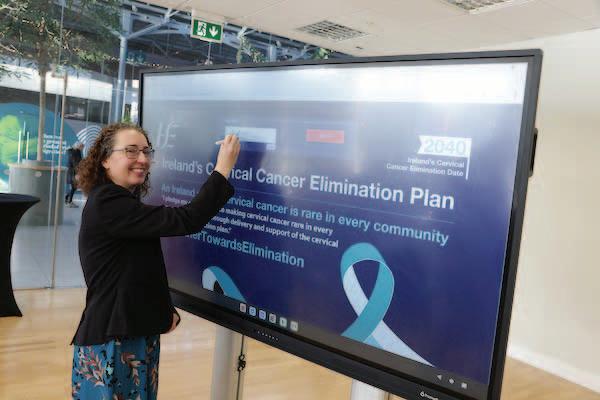
As
Director of the National Immunisation Office (NIO) and a consultant in public health medicine, I am delighted to introduce our Strategic Plan 2024-2027, writes Lucy
Jessop.
This plan reflects our unwavering commitment to ensuring that everyone in Ireland has the opportunity to benefit from immunisation, one of the most powerful and cost-effective public health tools available.
Immunisation not only saves lives but transforms communities, protecting individuals across all stages of life from vaccine preventable diseases. Our vision is simple but bold: to see Ireland as a nation where every individual, regardless of their background or circumstances, is
protected from vaccine preventable diseases through high-quality, equitable, and person-centred immunisation programmes.
The past few years have been both challenging and informative for immunisation efforts globally and here in Ireland. The Covid-19 pandemic put the importance of vaccines in sharp focus. We witnessed incredible achievements
in vaccine uptake, strengthened collaborations across the health system, and the resilience of communities working together. Yet, alongside these successes, other challenges have emerged.
We have seen a concerning decline in routine childhood vaccination rates, a pattern echoed across the world. Emerging threats like Mpox, and global challenges such as population displacement due to conflict have placed additional pressures on public health services. As the pandemic taught us, we cannot afford to be complacent. We must learn from experience, adapt, and strengthen our immunisation systems for the future.
The Strategic Plan 2024-2027 is built around six core objectives, each designed to address critical needs while preparing us for future challenges:
• Childhood immunisations: Achieving 95 per cent uptake of childhood vaccines is a top priority. This is more than a statistic, it is about protecting children, families, and communities from diseases we know how to prevent. We will work closely with general practitioners (GPs), public health nurses (PHNs), and other healthcare providers to reach underserved communities, ensuring that every child has access to life-saving vaccines.
• School immunisations: Schools are vital settings for ensuring equitable vaccine delivery. We aim to meet WHO targets for vaccines like HPV, a cornerstone of the global effort to eliminate cervical cancer and extend the reach of flu vaccines to all primary school children.
• Adult immunisations: Protecting vulnerable groups, such as older adults, pregnant women, and healthcare workers, is critical. Increasing uptake of influenza vaccines in all eligible groups to 75 per cent and exploring tailored programmes for higher-risk populations, such as gay, bisexual, and other men who have sex with men (gbMSM), will be key areas of focus.
• Covid-19 vaccination integration: While Covid-19 may no longer be classified as a public health emergency, it remains a significant concern. We will integrate Covid-19 vaccination into routine programmes, ensuring that boosters are available to those who need them.
• Emerging threats and resilience: The pandemic underscored the need for robust systems to respond to outbreaks and unexpected public health crises. Developing scalable vaccination processes and strengthening community trust in vaccines will help us prepare for the future.
• Data and technology: Accurate, timely data is the backbone of effective public health programmes. Our plan includes the development of a National Immunisation Information System (NIIS), which will provide real-time insights into vaccine coverage, identify gaps, and help us ensure no one is left behind.
One of the guiding principles of this strategy is equity. We know that certain groups whether due to socioeconomic barriers, geographic location, or other challenges are less likely to access vaccines. Addressing these disparities is not just a moral imperative but a practical one. A population is only as protected as its most vulnerable members.
We are committed to working with communities to understand their specific needs, breaking down barriers, and tailoring our programmes to ensure inclusivity. By partnering with organisations like the HSE National Social Inclusion Office (NSIO), Public Health departments, and community representatives, we can deliver immunisation programmes that truly reflect the diversity of our population.
None of this can be achieved alone. Our success depends on strong, meaningful partnerships with healthcare providers, public health professionals, the
education sector, and most importantly, the communities we serve.
Trust is the foundation of any public health intervention, and clear, accessible communication is essential. We will continue to invest in innovative campaigns that not only share facts but also address concerns, tackle misinformation, and build confidence in vaccines.
The journey ahead is ambitious, but I firmly believe that together we can achieve it. By focusing on collaboration, equity, and innovation, the NIO will work to ensure that every person in Ireland has the opportunity to live free from the burden of vaccine-preventable diseases.
I am incredibly proud of the multidisciplinary team at the NIO and the dedication they bring to their work every day. With the support of our partners and the public, I am confident we can deliver on these objectives and make Ireland a leader in immunisation excellence.
Let us move forward together, with determination and a shared commitment to equity and health for all.
You can read the National Immunisation Office Strategic Plan 2024-2027 here:
W: www.immunisation.ie
X: @hseimm
Instagram: @hseimm
YouTube: National Immunisation Office






the ability to “greatly improve the efficient and equitable allocation of health and social care resources”, research by the Economic and Social Research Institute (ESRI) asserts.
The ESRI’s report, entitled An analysis of Population-Based Resource Allocation for health and social care in Ireland, states that “substantial investment and political commitment are required to ensure the necessary changes are fully realised”, to implement a structured and organised healthcare system in Ireland.
The report focuses on evaluating the current resource allocation mechanisms within Ireland’s healthcare system and exploring the potential of implementing PBRA mechanisms within proposed HSE health regions (HRs).
PBRA mechanisms are employed successfully in other countries, and offer a structured approach to allocate healthcare resources based on population needs. These models consider various factors such as age, health status and socioeconomic conditions, with the ambition to ensure a more equitable distribution of healthcare services.
The report states that the

implementation of PBRA will change “how funding allocations occur within the HSE and Irish health and social care more generally”. It calls for a “convergence or transition process”, akin to that used in the National Health Service (NHS) England, and should be employed to gradually move from initial funding levels to target allocations, ensuring that sudden financial impacts are mitigated.
The ESRI’s report is set within a number of important contexts, most notably building upon the Sláintecare Report and the Government’s goal to increase devolution of decision-making to local decision-makers. Secondly, it is set within the context for the need to implement PBRA and to develop a more integrated system of care. Since the publication of the Sláintecare report, and subsequent Sláintecare implementation plans, there has been increased preparation and governance.

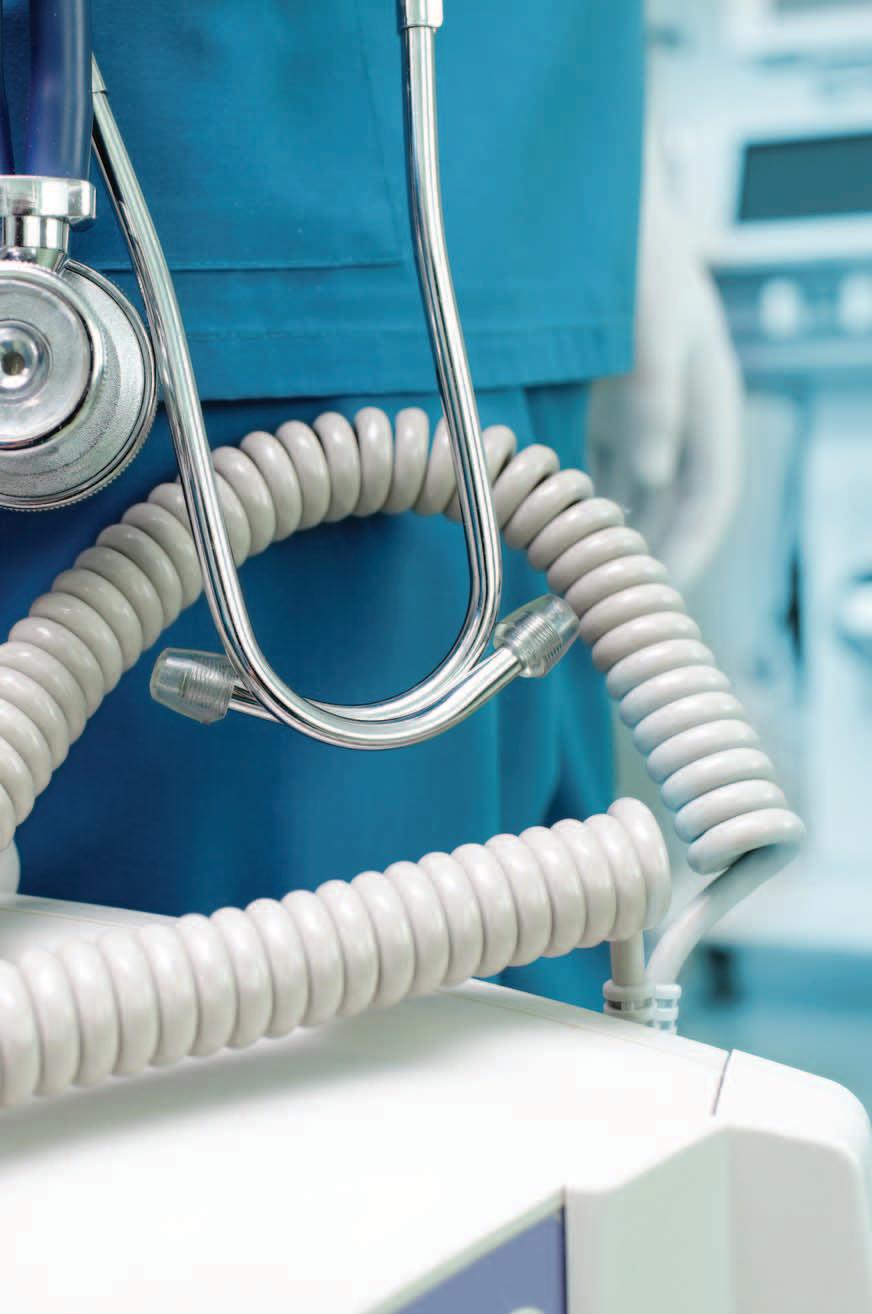
The Department of Health have outlined the appropriateness of a PBRA approach based upon the regionalisation of health and social care.
In 2020, then-Minister for Health, Simon Harris TD, outlined plans to develop six HSE HRs. These HRs would incorporate community healthcare organisations and hospital group structures in a conterminous geographical structure. However, the emergence of the Covid19 pandemic stalled the establishment of regional bodies, with much of the response to the pandemic undertaken at a centralised level.
The introduction of PBRA within Ireland’s healthcare system would represent a pivotal advancement for policymakers and healthcare users. The report states there is a “clear necessity” for Ireland to establish a system-wide PBRA system based upon the design fundamentals of PBRA systems used in healthcare systems internationally.
The report states: “The adoption of PBRA is not merely a policy change, it is a fundamental shift towards a more equitable, efficient and needs-based distribution of healthcare resources.”
The successes of PBRA in Ireland would therefore mark a significant milestone, not only in terms of policy implementation, but also in improving healthcare outcomes and addressing disparities across regions.
However, Ireland is currently experiencing “substantial challenges” in relation to waiting lists for health and social care. In many instances, these waiting lists are a consequence of workforce shortages or potentially lack of capacity.
While these shortages, at both national and regional level, are caused by many factors, implementing PBRA may improve the ability of policymakers to better plan the resource requirements in the medium term, as well as reduce inequities in workforce and capacity across different health and social care sectors, and across regions.
In 2022, the Department of Health published a report entitled Towards Population-Based Funding for Health, presenting options for a new PBRA mechanism for Ireland. The report outlined a potential model for allocating HSE resources, with the proposed PBRA formula being based on models from other countries, such as the UK, Australia, and Canada.
The proposed PBRA formula in particular, as stated in this paper, lays the foundation for future iterations of PBRA. It incorporates fundamental elements from international PBRA mechanisms, focusing on population size, age-sex composition, deprivation and rurality, parameters consistently used when determining healthcare demand and expenditure requirements. However, as the first such model to be potentially implemented within the Irish healthcare system, this process demands ongoing evaluation and refinement. In addition, its practical application in the unique Irish healthcare context will require careful monitoring and adjustments, in order to ensure it meets the specific needs and challenges of the Irish healthcare system as they arise.
The ESRI’s report states that the introduction of a PBRA model in Ireland “has the ability to greatly improve the efficient and equitable allocation of health and social care resources”.
It notes that while developing a PBRA formulae is essential in addressing the constraints and problems the State’s health care system is facing, the most difficult factor is securing stakeholder agreements and embedding PBRA mechanisms across the healthcare system.
The report concludes: “It is vital that the introduction of PBRA is not treated simply as an important key performance indicator, but rather that PBRA and HSE HRs represent the first stage in a multiyear process of integration, coordination and transparency, and devolution of important decisions to local decisionmakers.”

Anne O’Connor discusses her remit as Managing Director of Vhi Health and Wellbeing, and the evolving role of the semi-state healthcare provider.
Most publicly recognised for her role leading the HSE’s operational response to the Covid pandemic and the cyberattack of 2021, O’Connor’s experience spans an almost 30-years in public health, having initially trained as an occupational therapist in the UK before moving back to Ireland.
In the main, she has spent much of that career in mental health services, an area which she describes as her “first love”. A
decade of service in management roles from 2000 onwards culminated in her appointment as the National Director of Mental Health in 2014, and in 2018 she was appointed deputy Director General and Chief Operation Officer.
Given the length of O’Connor’s tenure and breadth of her experience, her announcement in April 2022 that she would be leaving to join the largest health insurer in the State as its

Managing Director of Health and Wellbeing, came as a surprise to many.
Asked about her decision to join Vhi, she says: “It is a very different construct. Vhi is the only health insurer on the market that exists solely for the benefit of our members. Any profits made are reinvested on behalf of our members to enhance Vhi members healthcare and services. This is an important differentiator for me.”
“Vhi is the only health provider that exists solely for the benefit of our members. Any profits made are reinvested... This is an important differentiator for me.”
Anne O’Connor, Managing Director, Vhi Health and Wellbeing
She said “Vhi’s strategy aligns with the objectives of Sláintecare, supporting improved healthcare delivery in Ireland by providing better access to healthcare, delivering efficiencies, and enhancing healthcare outcomes.”
O’Connor’s decision to transition into health insurance is symptomatic of the accelerated evolution of traditional health insurers such as Vhi, and the changing model of healthcare provision.
With almost half the population of the State now holding private health insurance, organisations like Vhi have not only broadened the health care expenses they are willing to imburse, including around community care and wellbeing, but also provide urgent care and other clinical services to members.
O’Connor is overseeing Vhi’s provision of a wider range of services in its larger ‘360 Health Centres’, including diagnostics, targeted screening, women’s health, paediatrics, orthopaedics, wound care, physiotherapy, psychology, and dermatology.
Alongside the 360 Health Centres –currently operating in Dublin, Limerick, and Cork – O’Connor’s remit includes clinical call centre, digital platforms, and Vhi’s Hospital@Home service.
“What really attracted me was that Vhi, as the largest health insurer in the State, has a strong commitment and

strategy to develop health services for its members,” O’Connor explains.
Asked about her initial reflections upon joining Vhi, she says: “With more than 1.2 million members, it had a scale that was appealing to me and having been in public healthcare in various remits, I wanted to go somewhere that would challenge me and where I could learn. A regulated insurance company with a group structure is a very different environment than what I had become used to.
“Interestingly, I quickly acknowledged that I, and many other senior decisionmakers working in the public health service, know very little about the work organisations like Vhi do within the health sector. The healthcare ecosystem is much larger than many people realise, and I think there are barriers to recognising innovation and effectively collaborating on delivering new systems and solutions.”
O’Connor asserts that, despite its relatively small population by global standards, the State’s healthcare demands exceed the volume of its services, even if both public and private services were fully utilised.
As a result, she says: “There is an onus on us to decide who does what. Who is best placed to respond to certain demand and how can we best break down the gap in supply and demand.”

Outlining her assessment that the public health service must serve the most vulnerable and most in need, she insists: “Healthcare should not be a competition. There are people who attend health services who will have had interactions with many state agencies and who have multiple conditions and morbidities. They need very complex care and the public health services, situated alongside the other vital public services should be ideally placed to help those people.”
The Health and Wellbeing Managing Director identifies the Covid-19 pandemic as a point of inflection around how the private sector supported the State’s healthcare delivery. Reiterating that roughly half of Ireland’s population now actively choose to have private health insurance, she says that this choice is driving the expansion of services on offer.
Importantly, she states, those services and the requirements within those services are underpinned by the exact same fundamentals driving public health care delivery, namely: quality, patient safety, and skilled staff responding to need.

Describing the impact of the pandemic on evolving demands for healthcare and wellbeing services, O’Connor explains: “We see a big focus on people trying to stay well and taking a preventative approach toward their health. I believe that a greater focus on individual wellness during the pandemic has driven that.
“In the HSE, as part of the response to Covid, we stood up a whole workstream around access to online healthcare, mainly because we had to at the time. Now, within Vhi, and indeed, many other healthcare providers, telehealth is a mainstay, because people saw the benefits of it and now expect it. Simultaneously, there was a discernible benefit for healthcare providers being able to efficiently respond to demand.
“There is a recognisable advantage in the ability to scale digital healthcare responses in a way that is not possible face-to-face, and I think there is definitely scope for further cross sector collaboration, instead of reverting to traditional models of delivery.”
With much of Vhi’s healthcare provision predating O’Connor’s arrival – the Vhi 360 Health Centre in Carrickmines, for example, providing members with access to urgent care for minor injuries and illnesses, 365 days a year – the Managing Director of Health and Wellbeing says that her focus has been on integrating its available services and becoming a more cohesive and networked organisation, utilising multidisciplinary teams.
“Ultimately, we are all on the same journey of attempting to bend the cost curve of healthcare delivery, whether that is in public systems or healthcare providers. Essentially that means trying to intervene earlier to reduce the need for people to use higher cost, higher complexity services. Vhi is no different and in response we are developing integrated pathways for our members, delivered by the right professionals.”
O’Connor points to the introduction of solutions such as a single electronic patient record across all Vhi’s services, as an example of a shared goal between public and private providers, but one which has faced greater barriers in the public system.
Discussing alignment with the delivery of Sláintecare, Ireland’s plan for reforming healthcare delivery, she says: “Vhi’s purpose is to support our members to live longer, stronger, and healthier lives. Our core values are centred on supporting people to stay well. There is total alignment with Sláintecare’s drive towards early intervention, ensuring services are available at the right time and in the right place.”
Summarising her ambitions for the year ahead, O’Connor says: “In 2025 we intend to open our Galway 360 Health Centre, which is part of a broader assessment of developing our physical footprint and our services. Simultaneously, I want to continue to foster those relationships and partnerships with the public healthcare sector and other providers, to share innovations and respond to the demands of the population.”



Overreliance on a small number of owners dominating the private nursing home market could pose a “significant risk” to the sector and its tenants if a financial shock were to occur.
A report on the regulation of nursing homes between 2009 and 2024, published in October 2024 by the Health Information and Quality Authority (HIQA), states that “many smaller, local nursing homes, especially in rural Ireland, have closed in recent years, leading to a loss of these community-based homes”.
The HIQA report further demonstrates the trend towards larger nursing homes with more beds. In addition, the profile of nursing home ownership in the sector is changing, with evidence of consolidation by large corporate groups.
If one of these organisations experience financial challenges in the future – a trend which may emerge if the ongoing housing crisis is not resolved in the medium to long term –the report warns that this would pose a “significant risk to the nursing home sector and impact significantly on the people living in these centres”.
“Nursing homes are growing in size and catering for larger numbers while smaller nursing homes are likely to close,” the HIQA states.
On care, the report is more positive, stating that “significant progress” has
been made in enhancing the quality of care in nursing homes, although continued improvement is necessary.
The HIQA further says that nursing home care has moved away from a medical, institutional model towards a social model of care, explaining that the HIQA has sought to embed a “human rights approach” to care in the sector.
The report further stipulates that the Chief Inspector’s approach to regulation has “evolved over the years, including changes to its inspection process, using IT to better support regulation, and an increased emphasis on promoting the voice of residents”.
Over the 15-year period, the report states that HIQA’s Chief Inspector of Social Services, through the regulatory framework regulatory framework and her regulatory powers, has driven “improvements in the sector, working to ensure that residents are protected and are receiving safe, quality care and support”.
Carol Grogan, Chief Inspector of Social Services in HIQA says: “Over the past 15 years, we have consistently seen how important the relationship between regulatory compliance and good governance and management is in nursing homes.
“Many providers have worked hard to improve their compliance, resulting in stronger governance and management arrangements being put in place. This has led to better outcomes for residents and tangible improvements to their lived experiences. Many services are now providing care that is more person centred, with residents exercising more choice, enjoying a greater degree of privacy and dignity and being supported to live more meaningful lives.”
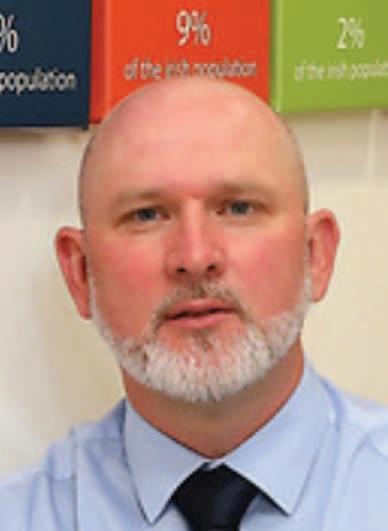
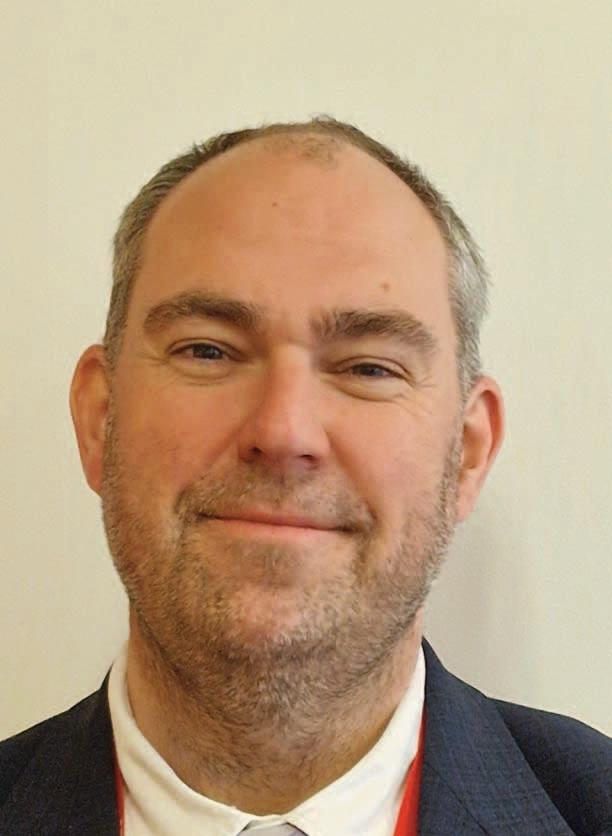
The Irish Blood Transfusion Service’s (IBTS) Medical and Scientific Director, Andrew Godfrey and Director of Production and Hospital Services, Barry Doyle talk to eolas Magazine about the future of plasma derived medicines in Ireland and the organisation’s vision for plasma collection, and the successful delivery of a strategic initiative – the reintroduction of Irish plasma for therapeutic use.
Remember ‘mad-cow disease’? In 2001, the IBTS decided to import plasma from areas free from Bovine Spongiform Encephalopathy (BSE) to reduce the risk of transmission of variant CreutzfeldtJakob disease (vCJD), the human form of BSE. This was part of several precautionary steps taken, when the possibility of transmission of vCJD by blood transfusion first emerged. After over two decades of importing plasma from abroad, the Irish Blood Transfusion Service are now producing bulk plasma for human therapeutic use again.
Plasma is the liquid part of your blood that carries red cells, platelets and white blood cells around the body. It makes up approximately 55 per cent of your blood. It contains clotting factors that help to stop bleeding, and antibodies, known as immunoglobulins, which fight infection. Plasma can be transfused as liquid plasma, processed into other plasma products, such as cryopreciptate or used as a source of important medicinal products known as plasma derived medicinal products (PDMPs). These are
therapeutic agents essential to lifesaving healthcare, which are obtained by a combination of large-scale processing steps called fractionation.
“In addition to the the importation of plasma for therapeutic use there was also an embargo on the collection and use of Irish donor plasma for fractionation into PDMPs. However, time has moved on and the risk of vCJD has been carefully re-assessed and the IBTS are now processing plasma for fractionation again to make essential medicines,” says Godfrey.
The fractionation processes used by plasma manufacturers are highly complex and specialised, and result in the separation of individual protein components of plasma, which are purified and subjected to pathogen inactivation. These products are used for the treatment of a variety of conditions including immune disorders, neurological disorders, blood disorders and infectious diseases.
One of the products most needed by patients is immunoglobulin which is used to reduce the effects of some inflammatory diseases, boost immunity and help fight infections in some immune-compromised patients. As well as immunoglobulins, plasma also contains a protein called albumin, which is used to treat people with liver disease, kidney failure, and major burns.
There is a significant deficit in the volume of plasma currently being collected in Europe and there is a drive to achieve self-sufficiency for PDMP production. Until recently, Ireland did not contribute to the plasma supply in Europe to make PDMPs.
Europe is heavily reliant on the United States and the EU is seeking greater security and control of its plasma collection and PDMP availability. Optimising the plasma collection supply chain is essential to removing the vulnerability and reliance on outside sources of PDMPs.

During routine processing of blood, the red cells are separated from the plasma. Previously in Ireland this plasma was discarded or used in the manufacture of laboratory reagents. Now this plasma, known as recovered plasma, will undergo controlled freezing, storage and shipping to a manufacturer to make medicinal products.
Medicinal plasma will be returned for use in Irish hospitals and any plasma that is surplus to the requirements of the Irish healthcare system will be used in the manufacture of other medicinal products such as immunoglobulin. This ensures that we make best use of every donation for patients in Ireland as well as contributing to the European pool of plasma.
The IBTS will enter its final year of its strategy ‘Connections that Count’ in 2025 and the reintroduction of plasma for therapeutic use is a key strategic initiative delivered under this current strategy.
“It was a significant undertaking encompassing all aspects of the organisation from donation clinic to plasma distribution,” according to Doyle.
Manufacturing experience and engineering skills were utilised to supplement existing technical and clinical expertise. “The project entailed infrastructure changes in the blood processing area in the National Blood Centre, the implementation of industrial freezing technology and a suite of electronic system changes to enable the management of plasma product and data.
The IBTS has now introduced plasma handling, freezing and storage processes compliant with industry regulations for medicinal products and the first shipment of plasma for fractionation took place in December 2024,” Doyle adds.
Optimising the plasma collection supply chain is essential to removing the vulnerability and reliance on outside sources of PDMPs.
There is an ever increasing demand for PDMPs estimated to increase 6 per cent year on year, and the recovered plasma shipped for fractionation will only partly meet the healthcare needs for PDMPs, especially immunoglobulin.
The indications for PDMPs are continuously expanding, as is the portfolio of medications which can be derived from source plasma. Many patients are completely reliant on regular infusions of PDMPs, but currently Europe can only meet around 60 per cent of its overall need for PDMPs and for some products the proportion is much lower.
To ensure we can meet the future needs of patients in Ireland, and become fully self-sufficient, additional plasma must be collected directly from donors in a process called plasmapheresis. This is where blood is removed from the donor, plasma is separated and the red cells returned to the donor. This is known as source plasma and the IBTS is well placed to commence this as we already collect platelet donations in a similar way.
Plasma donors can safely donate a larger volume at each visit and much more frequently than whole blood donors and so are key to meeting this gap.
Most European countries collect source plasma to supplement the plasma supply. Following the removal of restrictions relating to vCJD, source plasma collection is now possible in Ireland and the IBTS are in the early stages of scoping what this strategic development might look like.
T: 01 432 2800 W: www.giveblood.ie
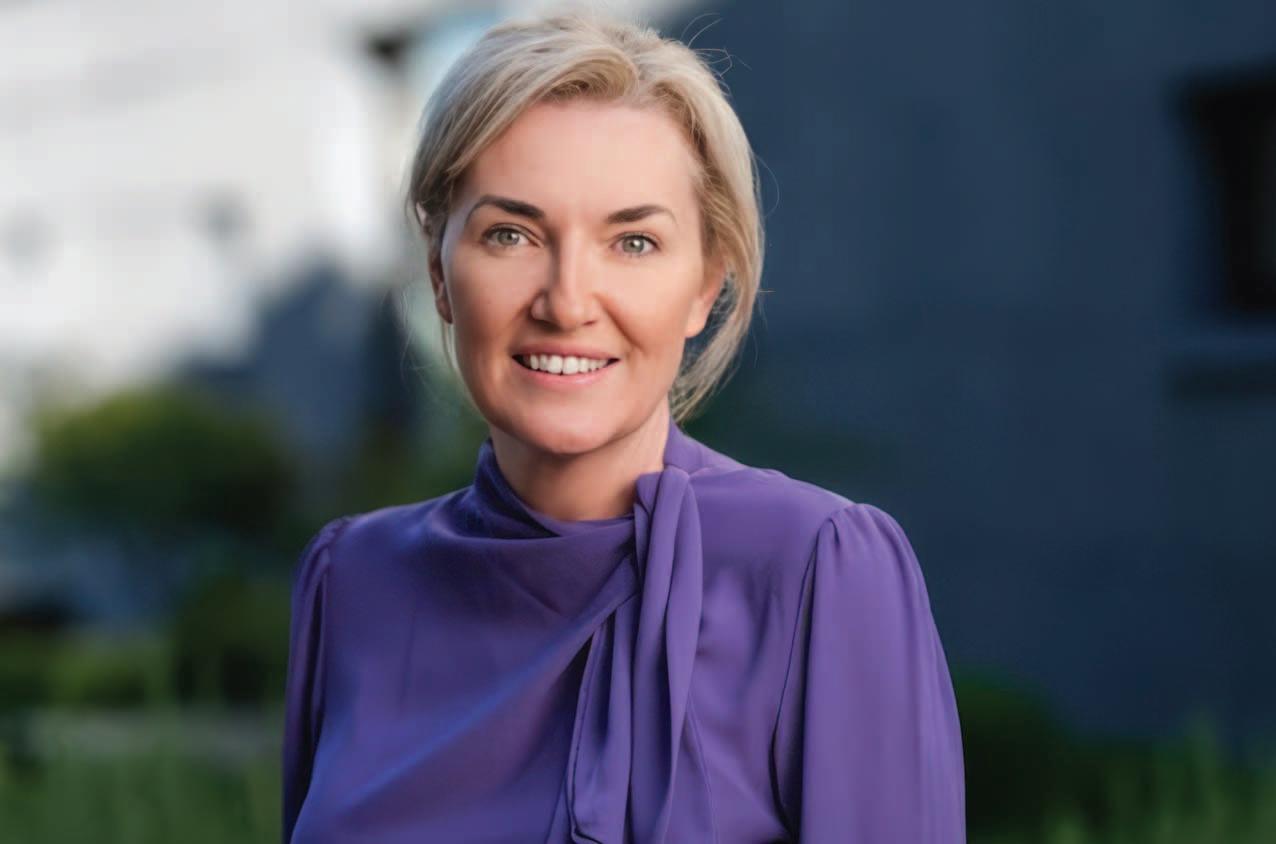
eolas Magazine sits down with Sarah Jane O’Dwyer, CEO and founder of IntuVu Health, and a clinician who brings over two decades of experience guiding healthcare organisations toward operational excellence and strategic growth, to discuss virtual care.
eolas Magazine (EM): How do you define virtual care in an Irish context?
Jane O’Dwyer (SJO’D): Virtual care refers to the provision of healthcare services remotely using digital technology. In Ireland, virtual care encompasses a range of services, including telemedicine consultations, remote patient monitoring, digital health platforms, and diagnostics. It is a critical tool for addressing challenges in the Irish healthcare system, such as long wait times, workforce shortages, and geographic disparities in access to care.
In the Irish context, IntuVu Health aligns with the goals of Sláintecare, Ireland's national health reform strategy, which aims to deliver equitable, integrated, and patient-centred care. It supports
the vision of providing timely care closer to home, reducing pressure on emergency departments, and enhancing community-based services.
EM: What are the benefits for the healthcare workforce and for patient outcomes?
SJO’D: IntuVu Health’s model has significantly enhanced efficiency in healthcare delivery by reducing the need for in-person emergency visits by over 80 per cent, allowing clinicians to focus on more complex cases.
Our combination of in-house clinician managed services and our highly regulated cutting edge contactless technology reduces the burden on hospitals, GP practices and insurance providers which frees up time for patient care.
We offer flexibility to our clinicians through both remote care – through our central command centre –and ‘hands on’ clinical work with our healthcare partners. IntuVu Health’s scalable care model allows providers to manage larger patient populations safely and effectively.
EM: What was your rationale for founding IntuVu Health?
SJO’D: The decision to found IntuVu Health stemmed from both a personal and professional recognition of critical challenges in healthcare delivery in Ireland and globally.
Unfortunately I had an incident where I required emergency care for a cardiac issue. I presented to a Dublin emergency department with a referral letter and abnormal test results. I sat in the waiting area for six hours. The department was so overcrowded I was not even triaged.
This is not just a challenge in Ireland, globally we have seen waiting lists grow exponentially, overcrowded emergency departments, and the strain on healthcare systems from an ageing population, workforce shortages, and budgetary constraints.
IntuVu Health aims to address these challenges by leveraging regulatory complaint virtual care technologies and clinical management delivered through our central command centre to improve access, enhance patient outcomes, and alleviate pressures on the healthcare workforce.
Specifically, IntuVu Health focuses on remote emergency triage and rapid supported early discharge services, using our contactless technology to monitor vital signs and our clinicians enable efficient, real-time care. This innovative approach prevents unnecessary emergency department visits and facilitates patient-centred, community-based care, again, aligning with the principles of Sláintecare.
My previous professional experiences in healthcare leadership and innovation have been pivotal in shaping the vision and execution of IntuVu Health.
As a former emergency care nurse and leader in hospital management, I have first-hand experience of the inefficiencies and pain points within traditional healthcare systems which informed the need for a more agile, tech-driven approach with clinical oversight.
Over the last 25 years I have worn many hats – from project manager, commercial roles, COO to CEO across acute and community settings in Europe and the Middle East in leading organisations.
Together with my leadership team of experts across multiple domains in healthcare delivery, we have extensive experience in implementing digital health solutions to drive innovation and collaboration. These experiences collectively underpin the strategic direction of IntuVu Health, providing evidence-based innovation, scalable solutions to deliver safe and effective care.
EM: What are the common trends or challenges that you are observing internationally?
SJO’D: Globally, healthcare systems face common challenges, including workforce shortages, ageing populations, rising healthcare costs, compliance, regulation in virtual care and developed reimbursement models. These are critical factors that ensure the safety, privacy, and efficacy of digital health solutions. Compliance with healthcare regulations, such as GDPR in Europe and HIPAA in the US, is essential to protect patient data and maintain trust.
Virtual care has emerged as a key solution, with trends pointing to the integration of digital technologies like AI, remote monitoring, and telemedicine to improve efficiency and outcomes.
However, disparities in access to these tools, particularly in rural and underserved areas, remain a significant challenge. Additionally, inconsistent policies and reimbursement models across countries create barriers to
scaling virtual care effectively. Despite these hurdles, the global healthcare landscape increasingly recognises the potential of digital health to address systemic issues and improve patientcentred care.
The Covid-19 pandemic was a turning point for virtual care, driving its rapid adoption and normalising its use in mainstream healthcare. With lockdowns and overwhelmed systems, telemedicine and remote monitoring became essential for maintaining continuity of care.
This period also accelerated innovation in digital health technologies and highlighted the need for scalable, efficient solutions and regulated technology. Governments introduced temporary reimbursement policies, setting the stage for long-term regulatory frameworks.
Patients and providers alike embraced virtual care’s convenience, and expectations have shifted towards more flexible, technology-enabled care options. While the pandemic catalysed significant progress, it also revealed the importance of investing in equitable access and sustainable integration for virtual care’s long-term success.
EM: What is your overarching vision for the IntuVu Health launch in 2025 and subsequent scaling?
SJO’D: I believe in fair and equitable care for all, regardless of your circumstances. Had I not had private health insurance when I required care, who knows how long I would have had to wait to be triaged. The evidence is widely reported on the correlation of length of time a patient waits in the emergency department and their deterioration.
Through our market research, we have identified a growing demand for our services, with a waitlist of 12 healthcare providers spanning Europe, the Middle East, Canada, and the USA. These organisations are facing similar challenges in healthcare delivery.
This broad international interest underscores the global relevance of our solutions and the potential for scaling IntuVu Health’s impact in improving
healthcare outcomes and operational efficiency worldwide.
Our ultimate goal is to be at the forefront of a healthcare transformation that empowers patients, supports clinicians, and creates more sustainable healthcare systems worldwide.
EM: Do you have a message for policymakers?
SJO’D: I would emphasise that virtual care is not just a convenience – it is a necessity for building resilient and sustainable healthcare systems. As the demands on healthcare grow, innovative solutions like IntuVu Health must become integral parts of care delivery. By prioritising supportive policies, including funding for digital health infrastructure, equitable access to technology, and clear reimbursement frameworks, policy-makers can accelerate the adoption of virtual care and unlock its full potential.
Additionally, it is crucial to focus on regulatory frameworks to guide the appropriate use of virtual care technologies, ensuring they meet established clinical standards and quality controls.
The lack of clear, universally applicable regulations can be a barrier to scaling virtual care, which is why ongoing efforts to harmonise policies, update telemedicine laws, and streamline reimbursement models are so important for the long-term success of virtual health solutions both in Ireland and internationally. Incorporating regulatory requirements is essential for the safe, secure, and effective delivery of virtual care at scale.
Collaborative efforts between governments, healthcare providers, and technology innovators can lead to significant improvements in patient outcomes, workforce efficiency, and overall system sustainability.
The time to act is now – virtual care is the future of healthcare, and bold policy decisions today will define the health of our populations tomorrow.




The development of a national learning analytics (NLA) capability represents a transformative opportunity for the future of healthcare in Ireland, write Martin McCormack, Chief Executive Officer, and George Shorten, Immediate Past President, College of Anaesthesiologists of Ireland.
The landmark report To Err is Human (2000) by the Institute of Medicine exposed a critical truth: as many as 98,000 people in the United States die annually from medical errors and preventable injuries in hospitals. By 2022, this figure had risen to 227,000 deaths per annum, making preventable injury the third leading cause of death in the US, surpassing fatalities from stroke, diabetes, and liver disease. These statistics underscore the urgent need for systemic reform to address the persistent challenge of medical errors.
Achievement of the “quadruple aim” in healthcare (improved individual experience of healthcare; improved population health; decreased cost per capita of healthcare; and improved experience of providing healthcare) requires a systems-based
approach which relies heavily on its management of information.
In Ireland, as in the US, similar concerns have been highlighted. The Irish National Adverse Events Study (INAES), which reviewed incidents in eight hospitals in 2009, reported an incidence of 10.3 adverse events per 100 admissions. These findings further emphasise the systemic flaws within healthcare systems that require a datadriven approach to patient safety.
Learning analytics (LA) is a relatively new discipline that has developed extensively within higher education over the past decade; it focuses both on the learning process of students and on monitoring their trajectories in training programmes.


“The joint development of a national analytics capability would empower healthcare leaders in the HSE and policymakers in the Department of Health with actionable insights.”
Martin McCormack, Chief Executive Officer, and George Shorten, Immediate Past President, College of Anaesthesiologists of Ireland
Recognising this, the Forum of Postgraduate Medical Training Bodies (Forum of PGTBs), the Health Service Executive (HSE), the Department of Health, and the State Claims Agency agreed to collaborate to develop an NLA capability.
Grounded in the recommendations of the 2021 Forum of Postgraduate Medical Training Bodies Strategy, such a capability would apply analytics to deliver timely personalised feedback on clinical performance to healthcare professionals, better match training to specific risks and to design ‘just in time’ targeted education to where patterns of preventable harm are identified as recurrent. This collective effort marks a crucial step toward healthcare which is more consistently safe.
Both To Err is Human and the Forum of PGTBs’ strategy stress the importance of system-wide learning to prevent errors and improve outcomes. However, as Ireland builds new regional executive organisations (REOs) and implements new electronic health records (EHRs), healthcare data remains fragmented, limiting the ability to identify patterns and address systemic issues effectively.
In particular, the information systems around clinical care and those around training of healthcare professionals have each evolved dramatically in recent years, but separately. Ideally, a systems-based approach would access relevant data in an ethical manner and present the results of analysis in a timely and comprehensible manner to the person or persons who is both responsible and capable of responding to them. The response itself is then captured and forms an important data stream as the system matures and adapts.
An electronic healthcare record is a fundamental piece of digital infrastructure for a modern
healthcare organisation. In many countries healthcare professionals have become familiar with and adept at interacting with an EHR as they provide clinical care. Frameworks have been proposed to integrate the EHR into education and training; such potential is currently underexploited.
A national learning analytics capability would harmonise the analysis of data available from clinical sources (such as an EHR), from training sources (such as a learning management system), and from registries of adverse events (such as INAES). This approach would leverage the insights provided into the transfer of learning to practice using newly developed data analytics tools This unified approach would in turn enable the implementation of preventative measures and support targeted interventions, addressing the call of the Forum of PGTBs’ strategy to reduce unintended harm.
Accurate, actionable feedback is essential for continuous professional development and improving patient outcomes. However, feedback mechanisms in many healthcare settings are often inconsistent and reactive, limiting their effectiveness.
A national analytics capability would transform these processes, providing clinicians with realtime and ‘highly informative’ insights, while enhancing the learning efficacy of professionals. For example, detailed performance metrics for specific skills could be benchmarked against proficiency standards, enabling clinicians to identify strengths and areas for improvement.


Unintended harm often arises from systemic flaws or knowledge gaps that traditional training methods cannot adequately address. By analysing patterns in clinical errors and adverse events, the national learning analytics capability could inform the development of specialist training programmes.
For example, learning analytics might reveal the team characteristics, events, and circumstances which, when coincident, tend to predispose to greater risk. This in turn provides granular targets for training scenarios including using simulation.
This approach ensures that certain training efforts are focused where they are needed most, reducing harm and enhancing patient safety.
The collaboration between the Forum of PGTBs, the HSE, the Department of Health, Science Foundation Ireland research centres, and the State Claims Agency reflects a shared commitment to addressing the systemic issues underlying medical errors.
This aligns closely with To Err is Human which emphasises that “good people are working in bad systems” and calls for structural changes to improve safety. A national learning analytics capability would help REOs to adopt a proactive approach to system design.
Core LA functions would include aggregation, interpretation, prediction, and visualisation using data of quite different types and sources. Predictive learning analytics could identify risk factor aggregates for such events as potential drug errors or communication failures, enabling highly targeted training interventions. This proactive stance is essential for building safer and more resilient healthcare systems.
Leadership is critical to driving the patient safety agenda. However, effective leadership requires access to reliable, comprehensive data to guide decision-making and evaluate the impact of initiatives.
The joint development of a national analytics capability would empower healthcare leaders in the HSE and policymakers in the Department of Health with actionable insights. Aggregated data on clinical outcomes and patient safety could inform resource allocation, policy adjustments, and strategic planning. The State Claims Agency’s involvement further highlights the potential for analytics to mitigate risks and reduce litigation costs, reinforcing the value of this initiative.
Healthcare in Ireland, as in many countries, often operates in silos, with limited communication and data sharing between organisations dealing with the same patient.
This fragmentation hampers efforts to learn from errors and disseminate best practices. Given its data science expertise, and the partnership approach being adopted (across state agencies, research centres, the HSE, and training bodies), Ireland may be particularly well positioned to deliver a nationally coordinated facility which achieves benefits for patients in years rather than decades.
This aligns well with the LA Action List proposed by the Science for Policy Reports Joint Research Centre “to create organisational structures to support the use of learning analytics and help educational leaders to implement these changes”.
The collaborative approach to developing a national analytics capability aims to break down silos, creating a shared platform for data collection, analysis, and learning. For instance, information on near-misses and adverse events could be pooled across REOs to identify national trends and inform consistent safety guidelines. Such integration would foster a culture of collaboration and continuous improvement, benefiting patients and providers alike.
The national learning analytics initiative has the potential to empower both clinicians and patients. For clinicians, access to real-time analytics would support their professional development, improving confidence and competence.
For patients, increased transparency around safety performance would build trust and encourage active participation in their own care. Moreover, patient-reported outcomes and experiences could be integrated into the analytics framework, providing a more holistic view of healthcare quality.
This reflects the priorities of the national Patient Safety Office and National Patient Safety Council: advancing patient safety while enhancing the overall care experience.
The development of a national learning analytics capability represents a transformative opportunity for healthcare in Ireland. By uniting the efforts of the Forum of PGTBs, the HSE, the Department of Health, and the State Claims Agency, this initiative addresses the unavoidable conclusion that recurrent patterns of preventable harm occur much too often in Ireland and elsewhere and provides a means by which to delivered targeted interventions to lessen them.
Through centralised data collection, real-time personalised feedback, targeted education, and proactive system design, a national analytics infrastructure would not only serve to decrease the incidence of unintended harm, but also drive a culture of accountability and continuous improvement.
As the healthcare system in Ireland faces growing complexity and pressure, the ability to learn from data will be essential for delivering safer, more effective, and more equitable care. This collaborative effort is not just a step forward – it is a vital investment in the future of Irish healthcare.